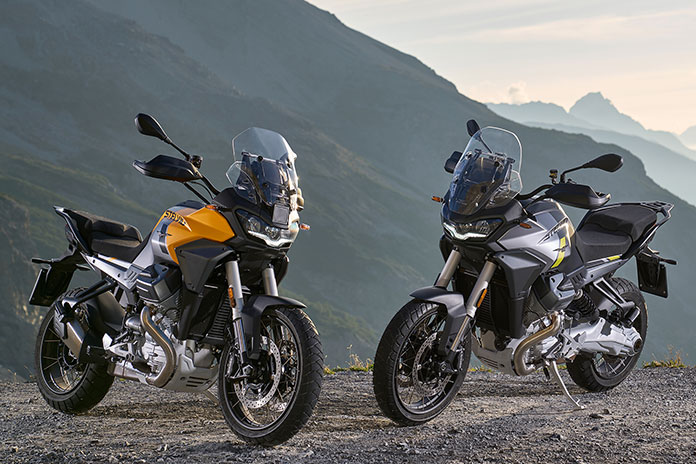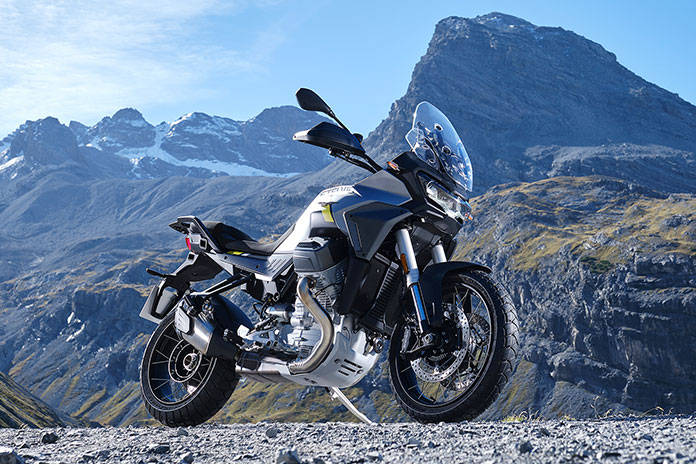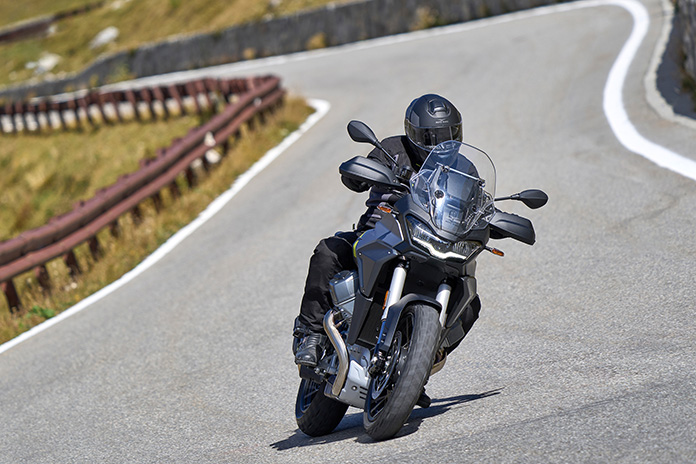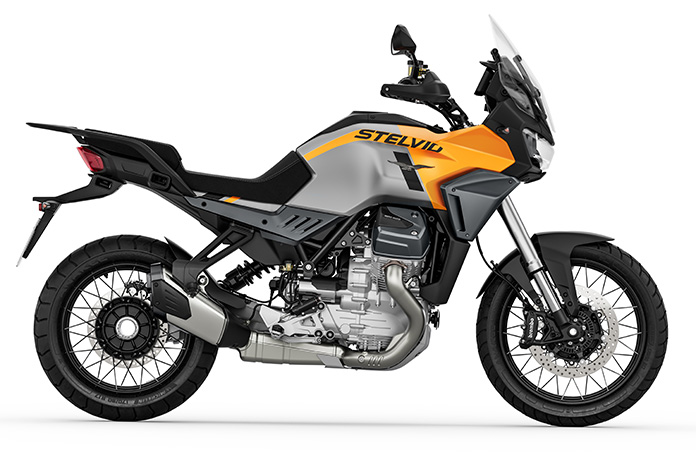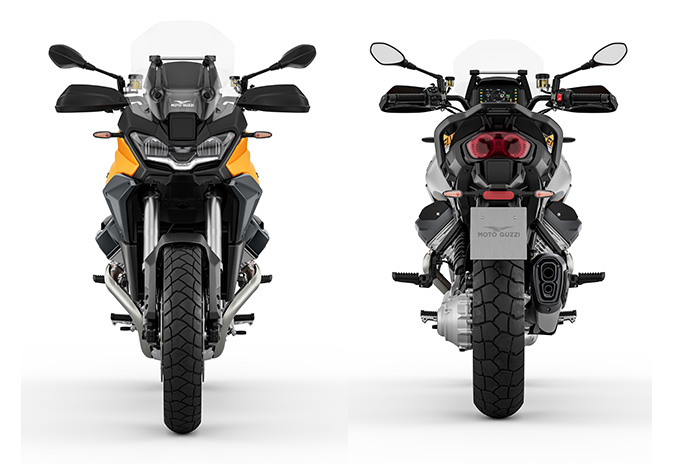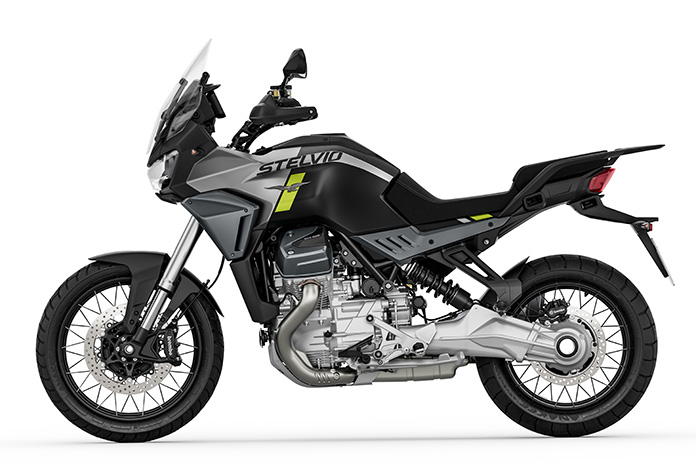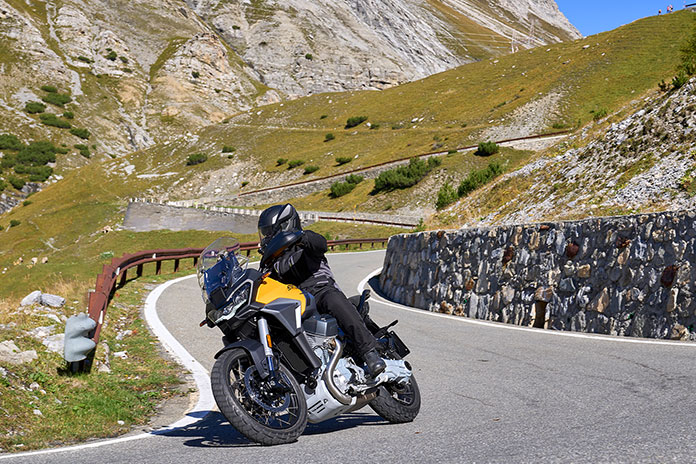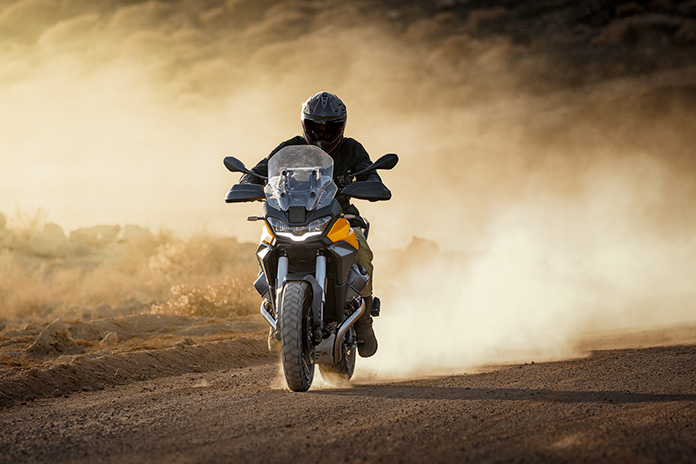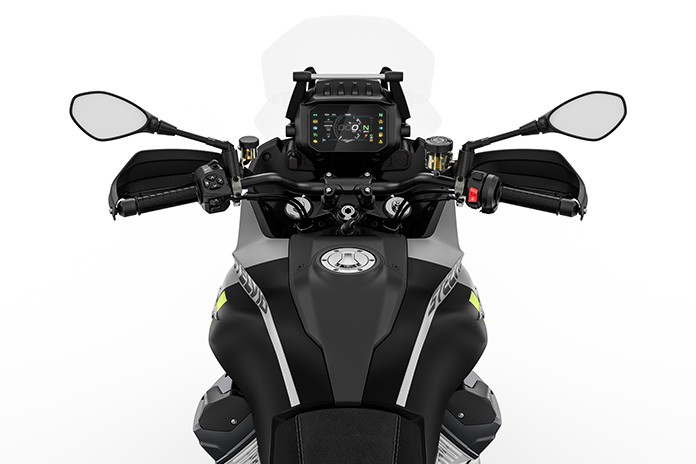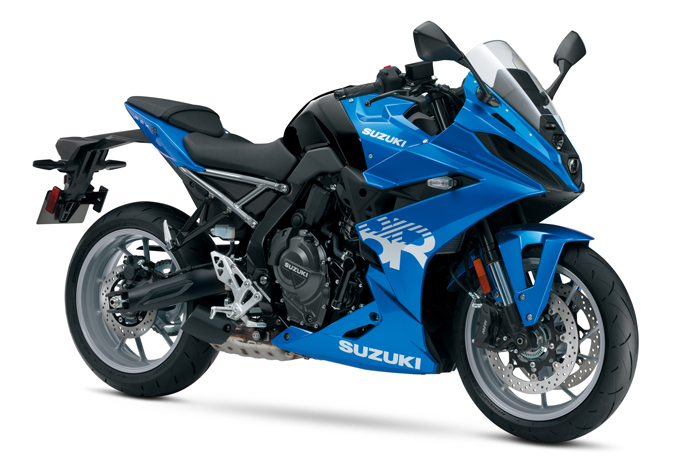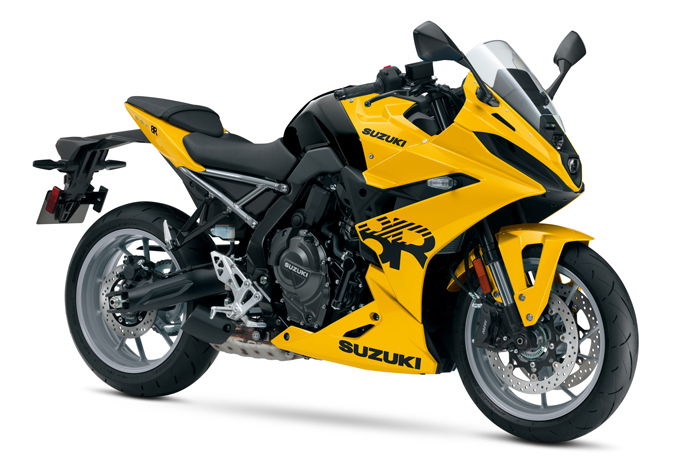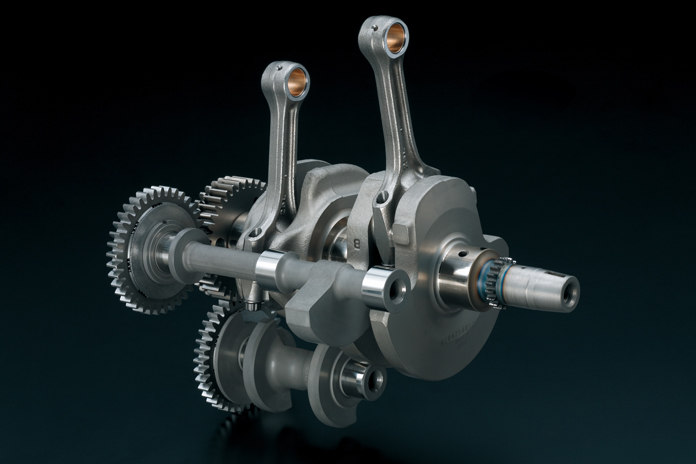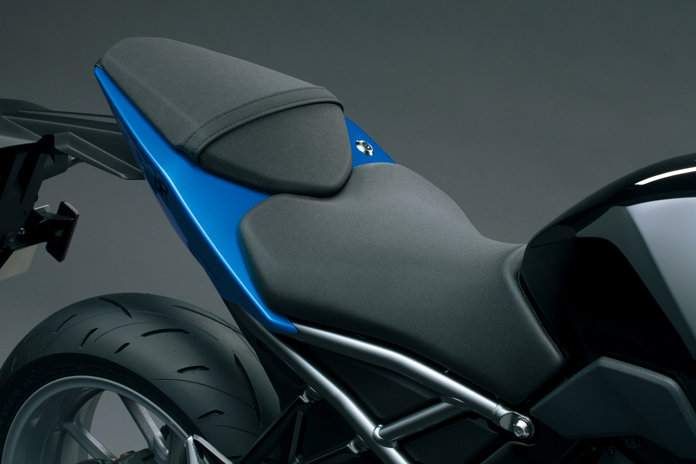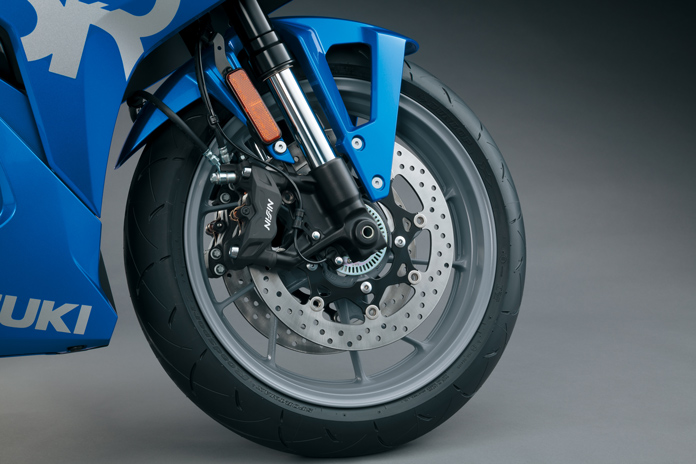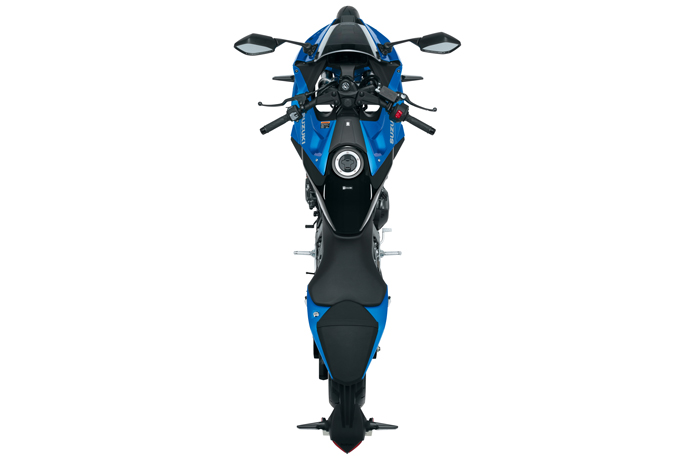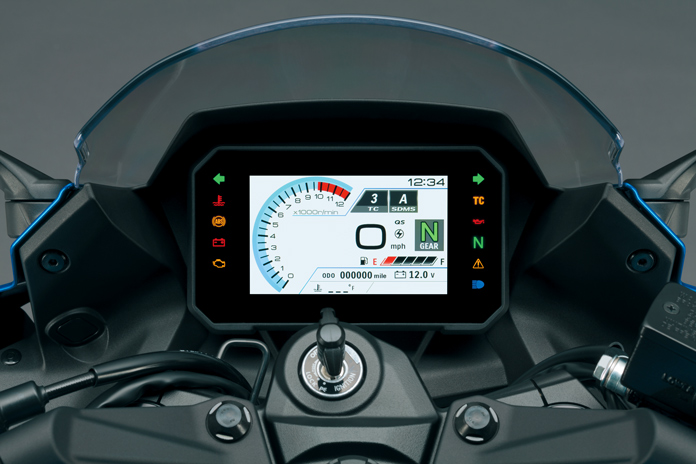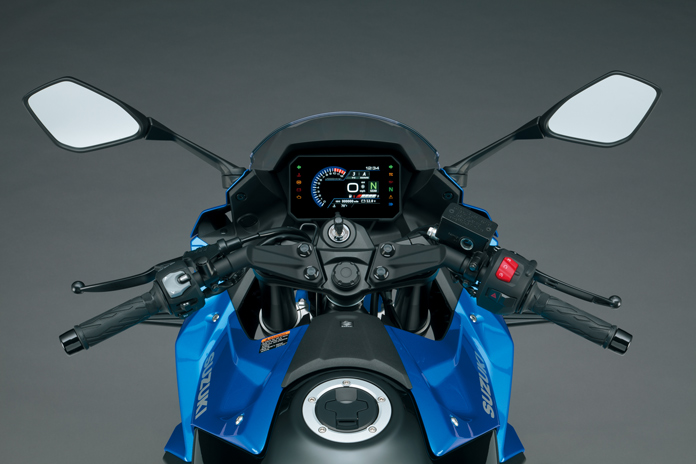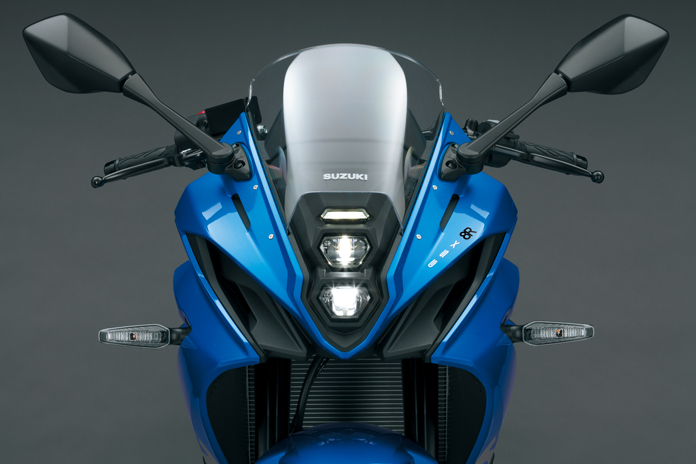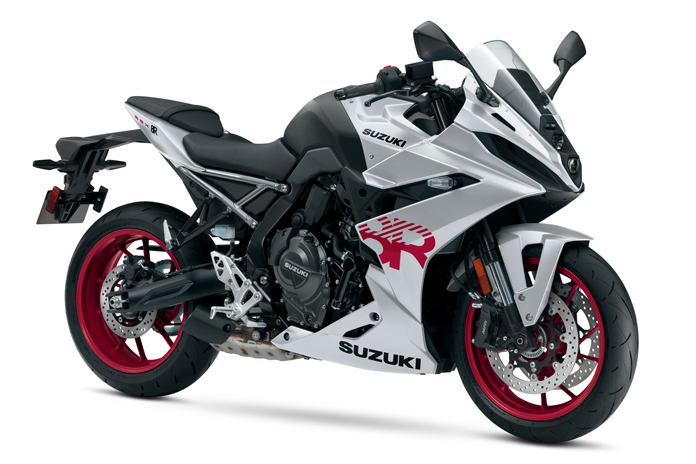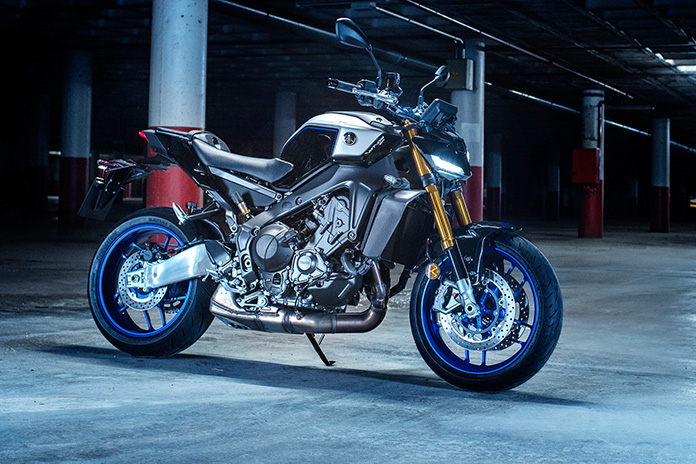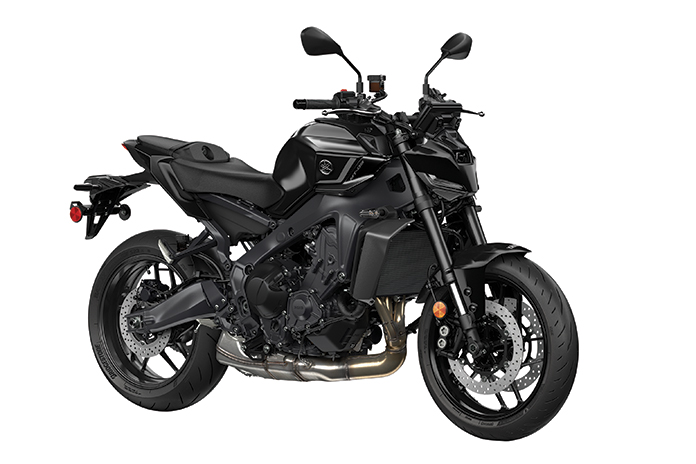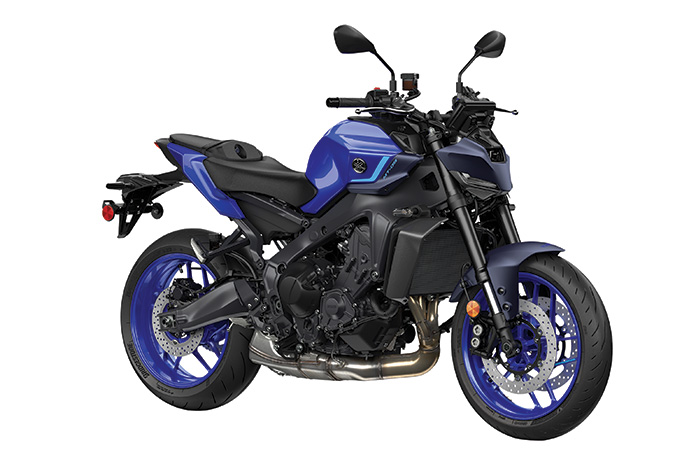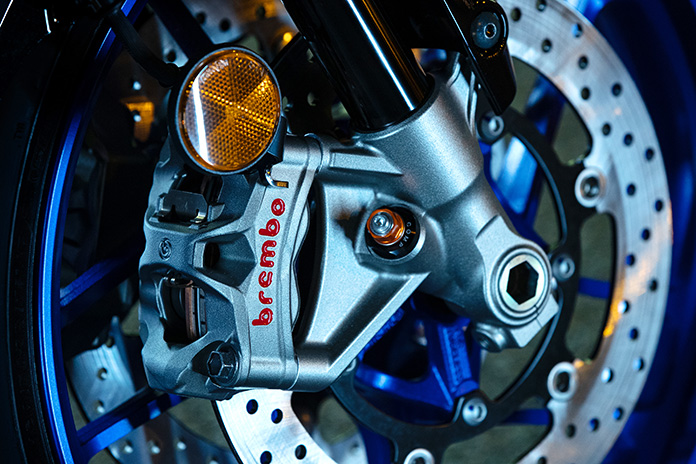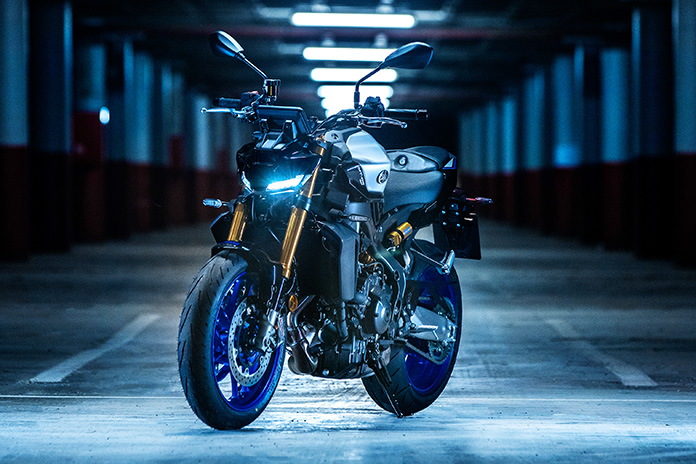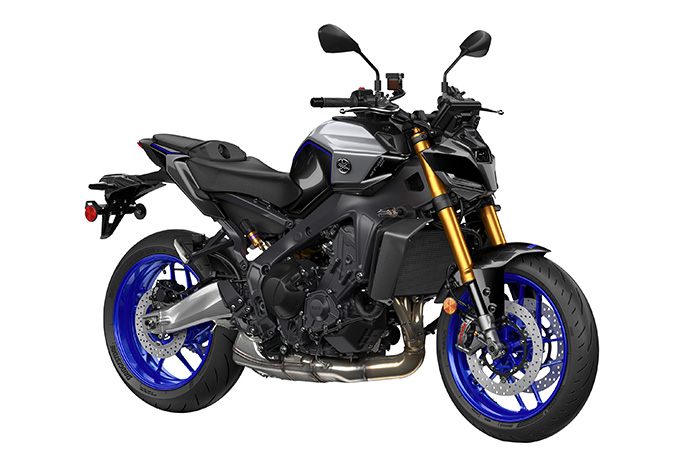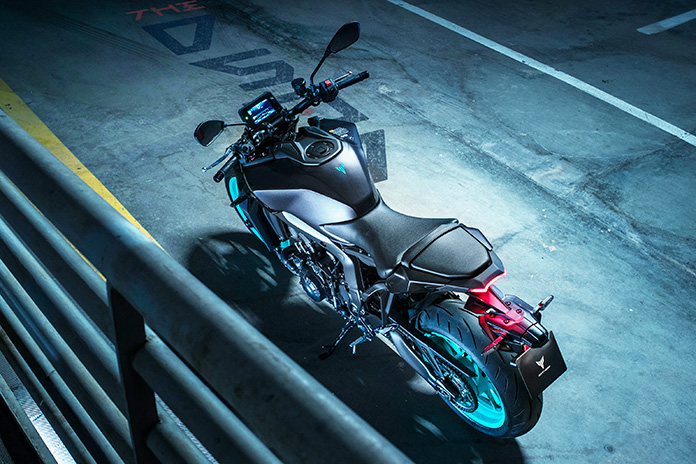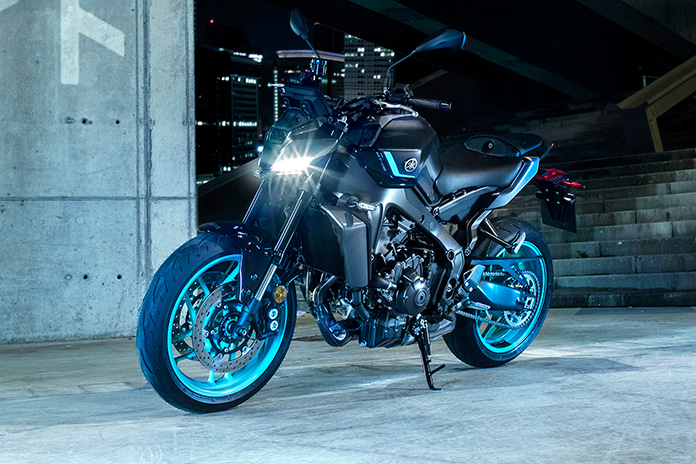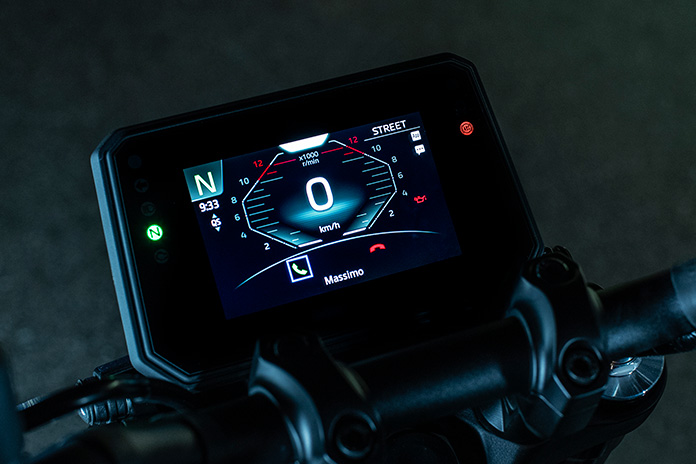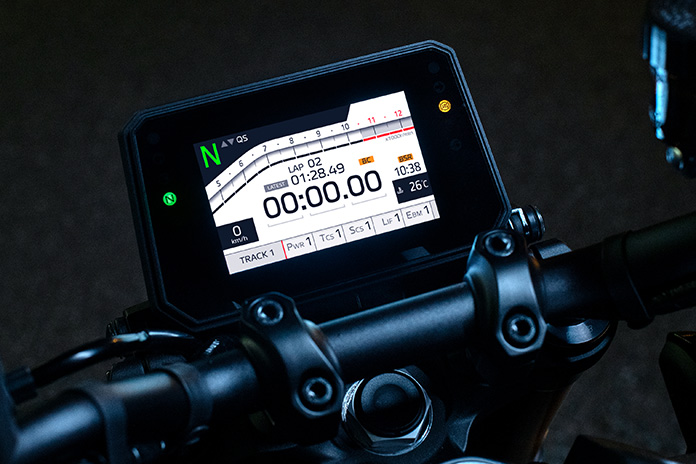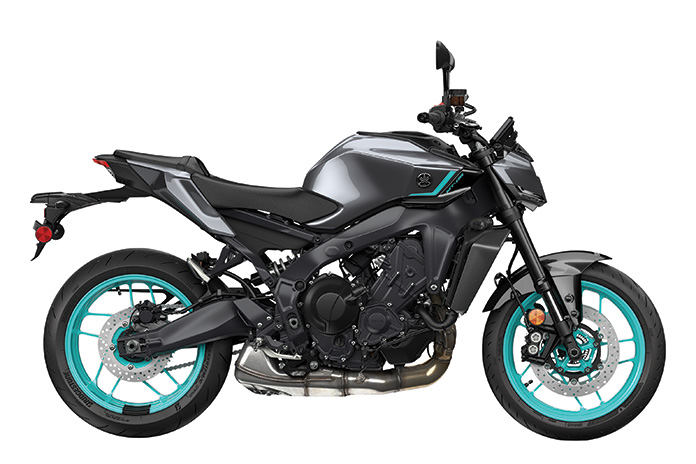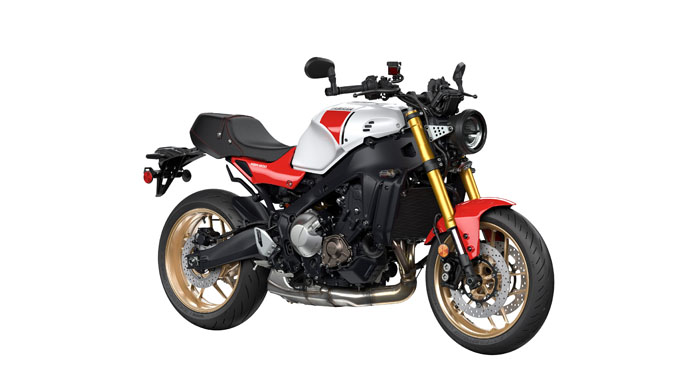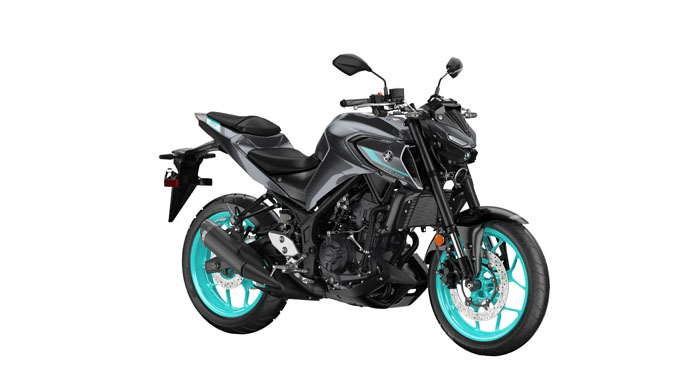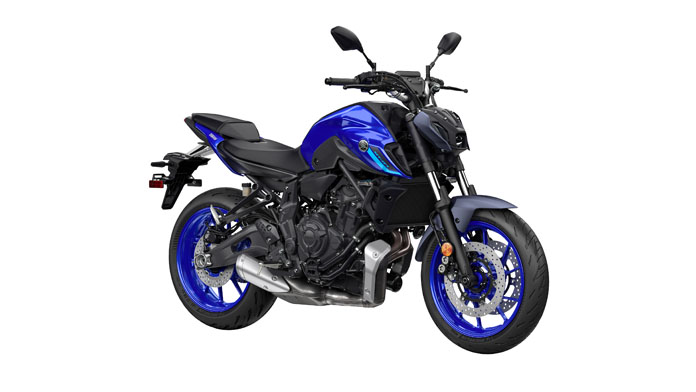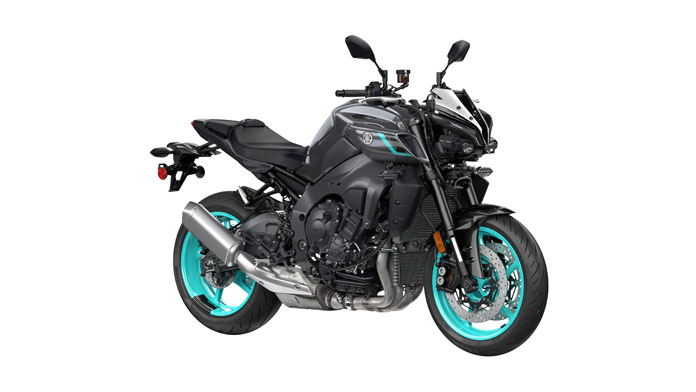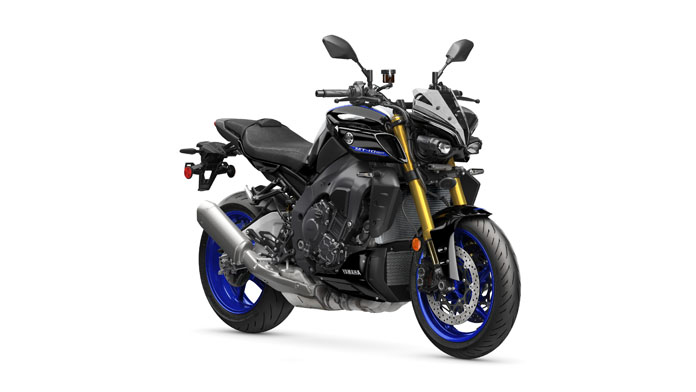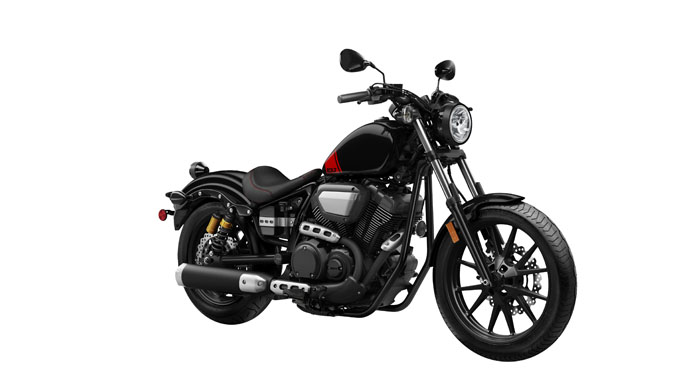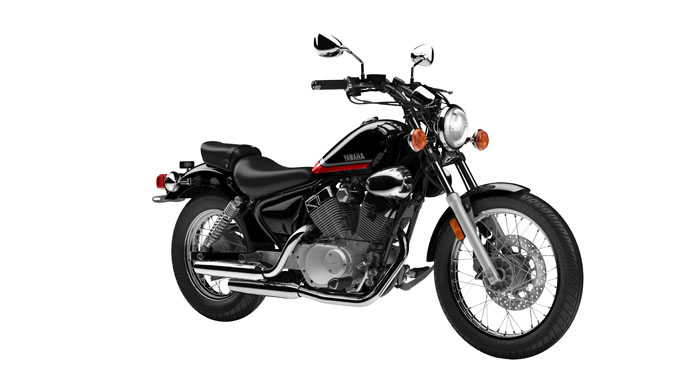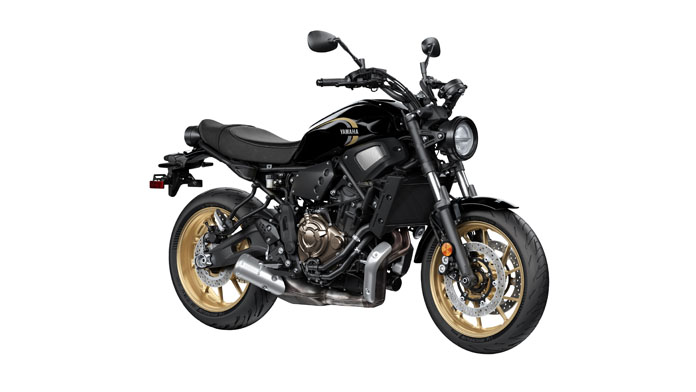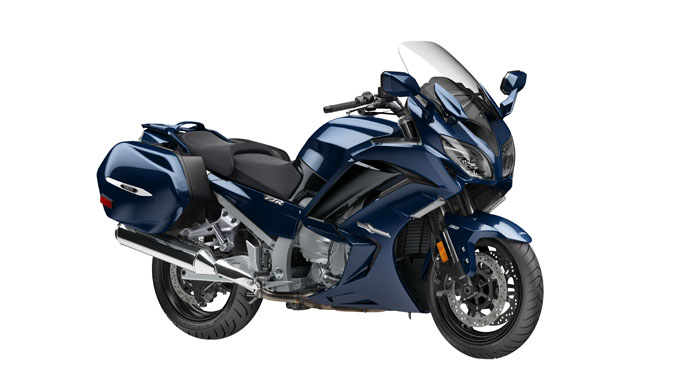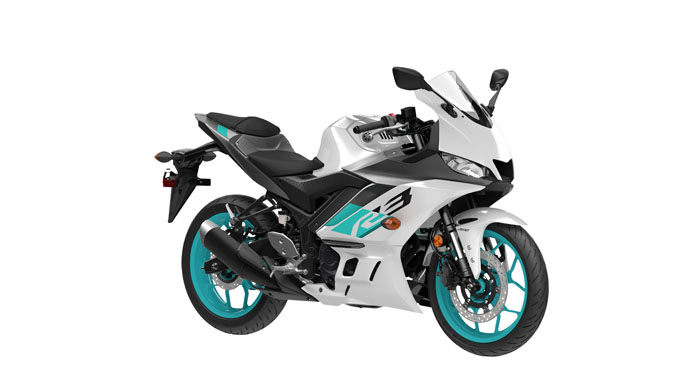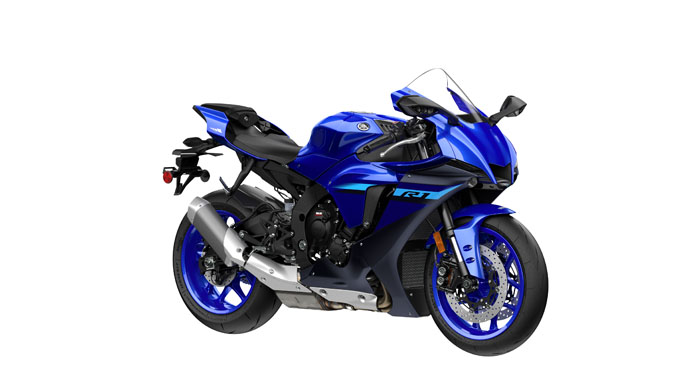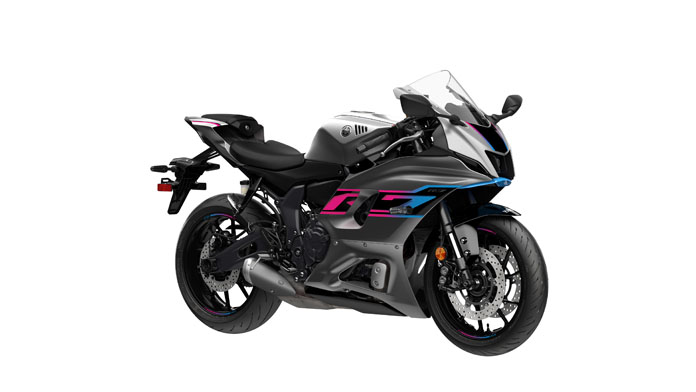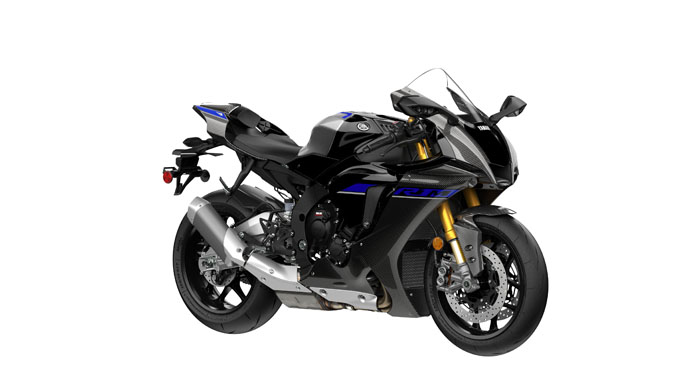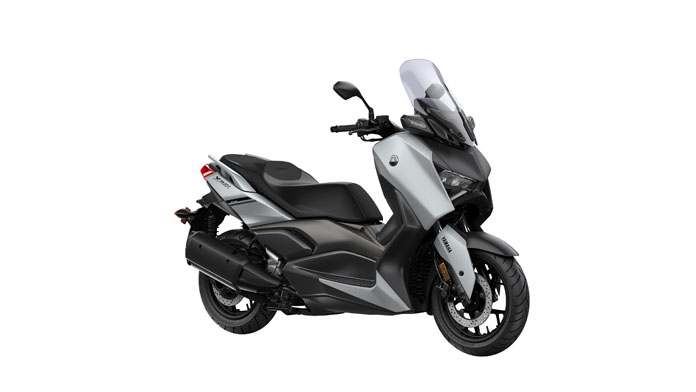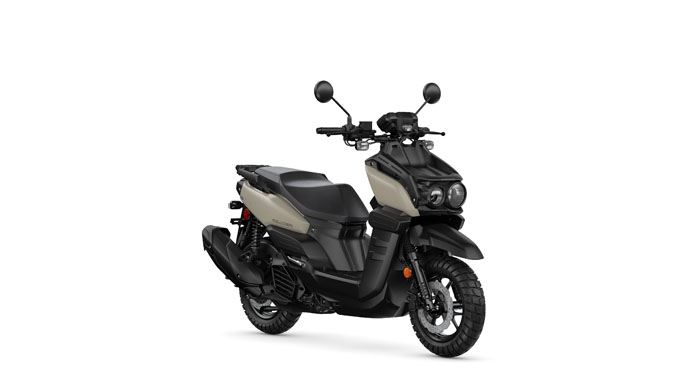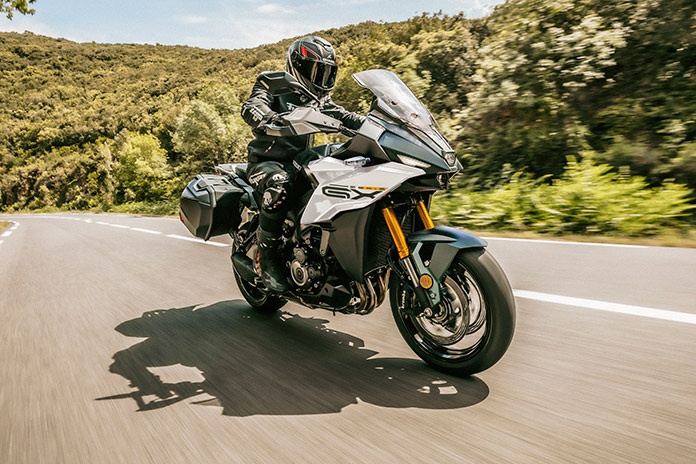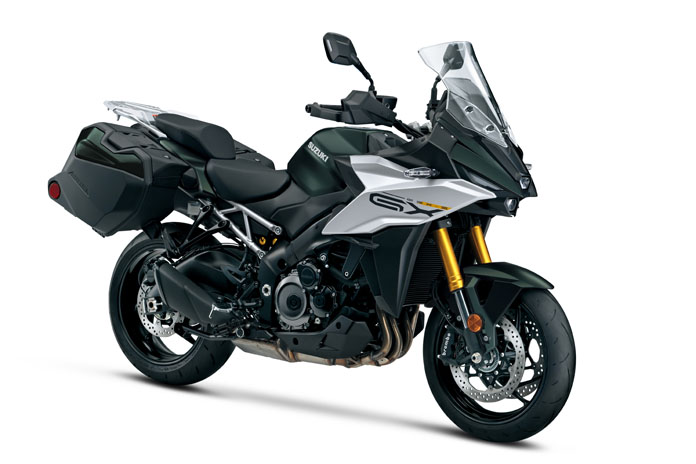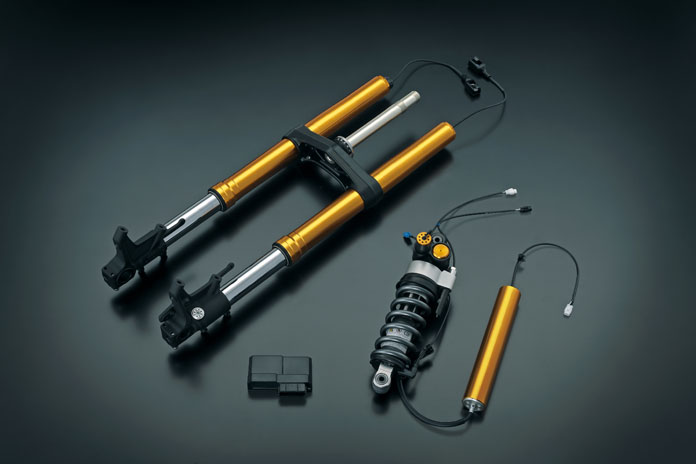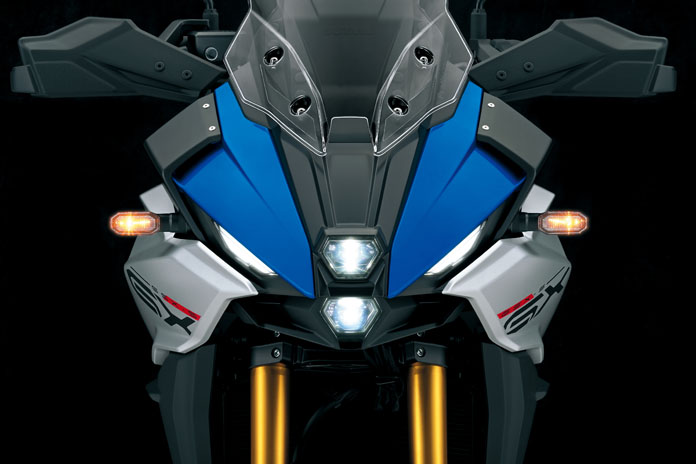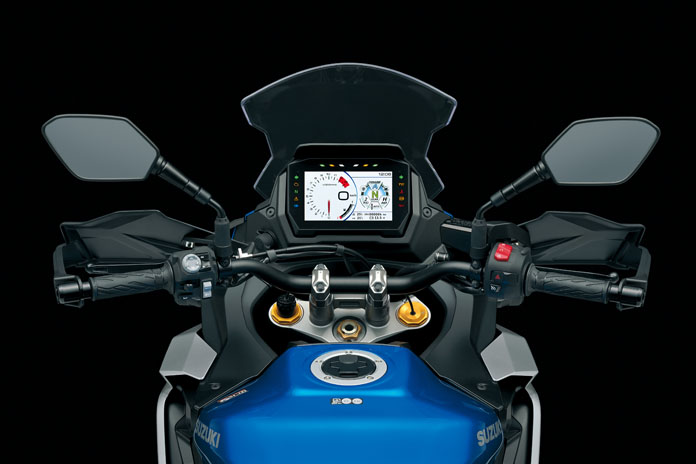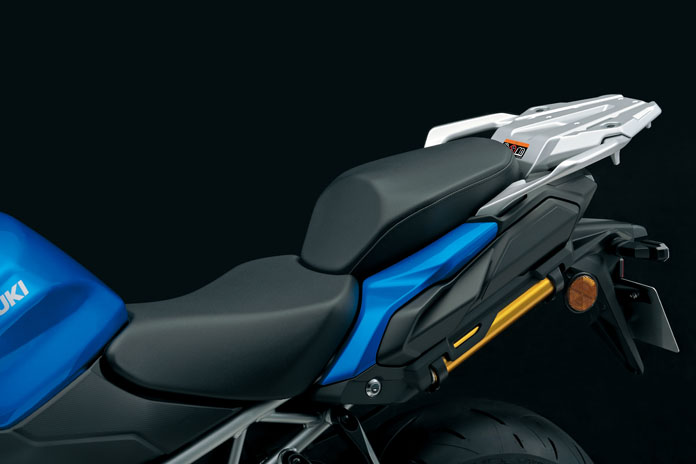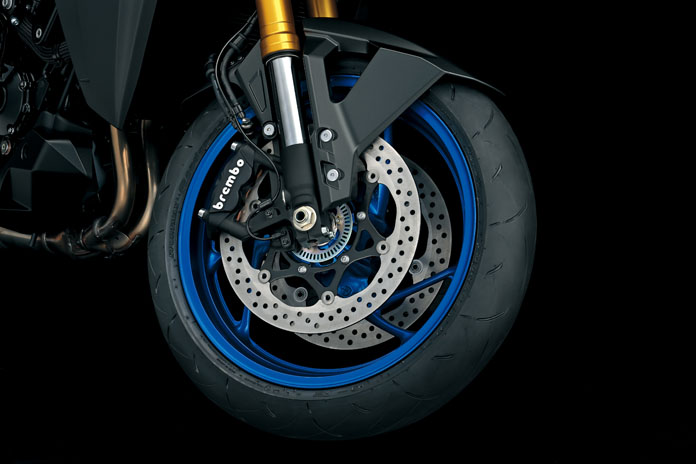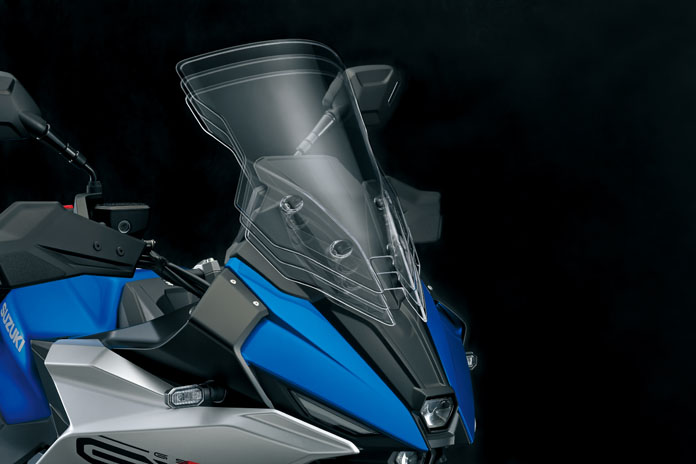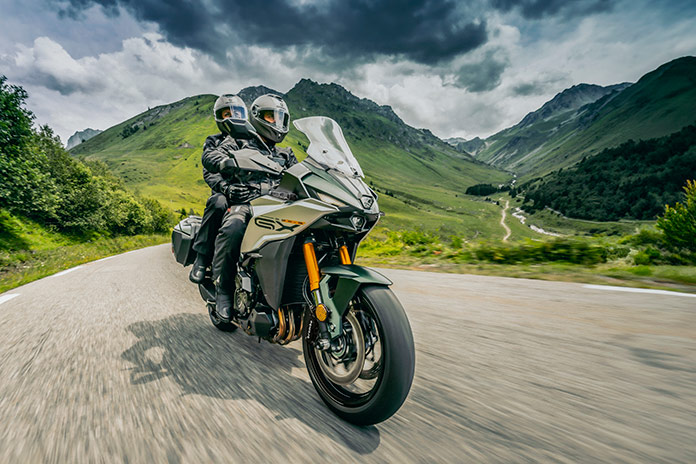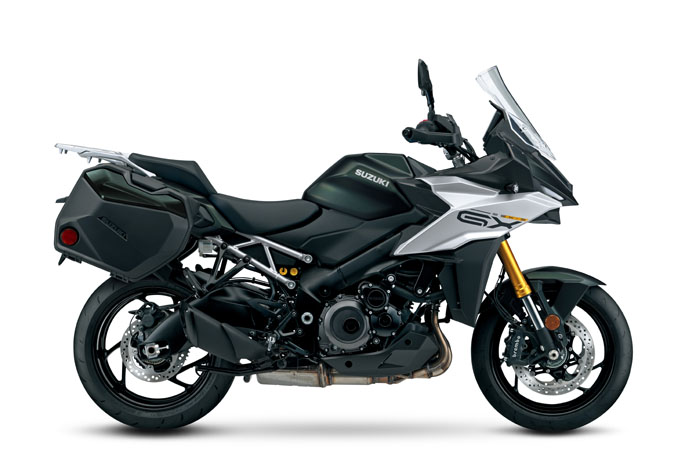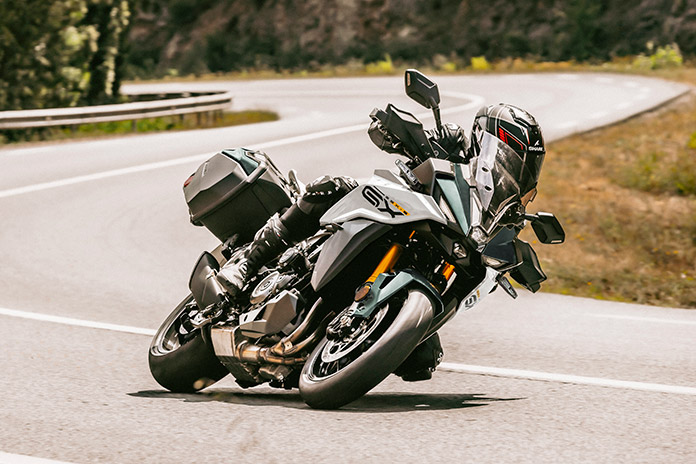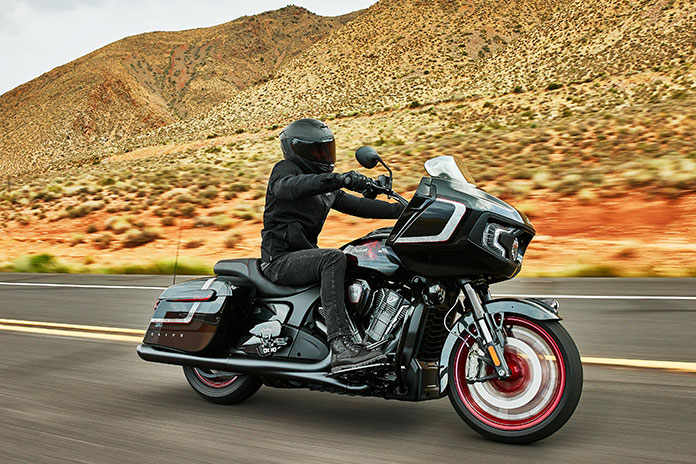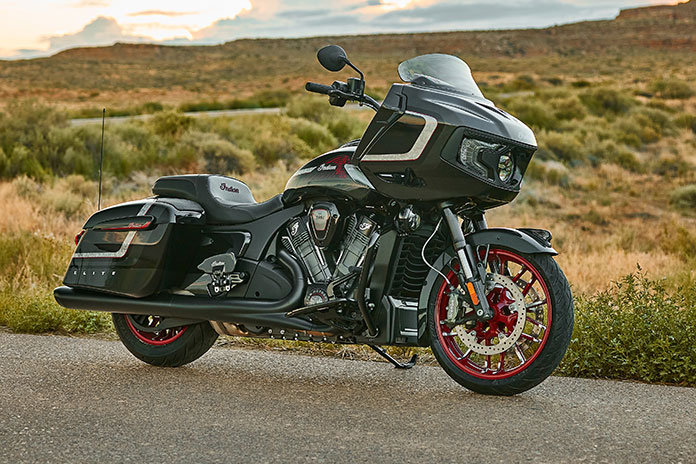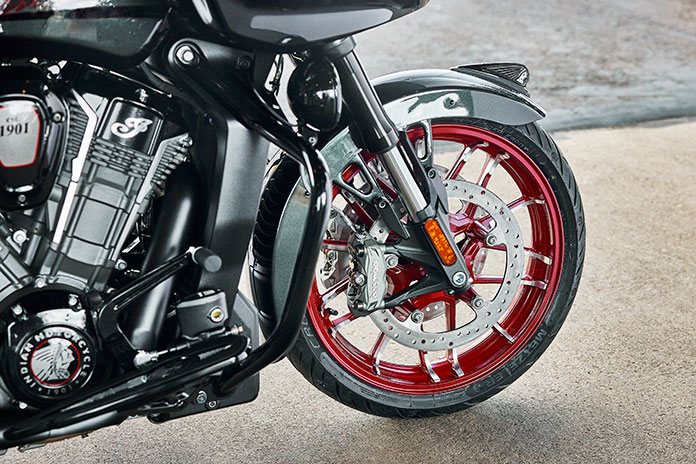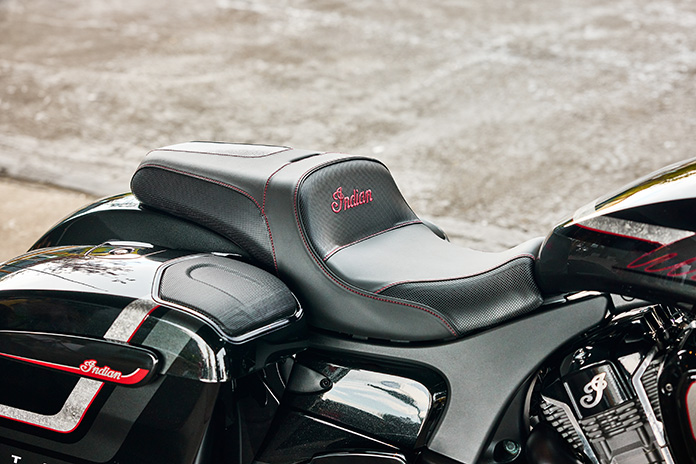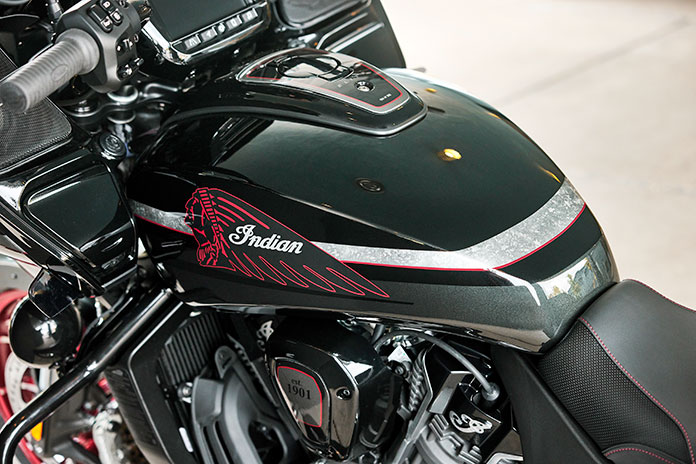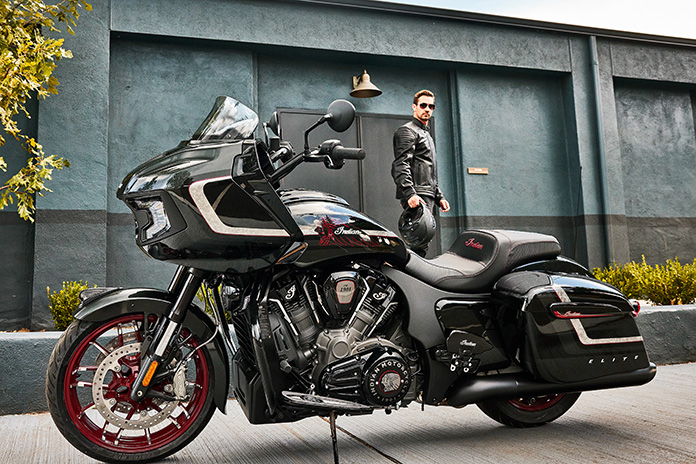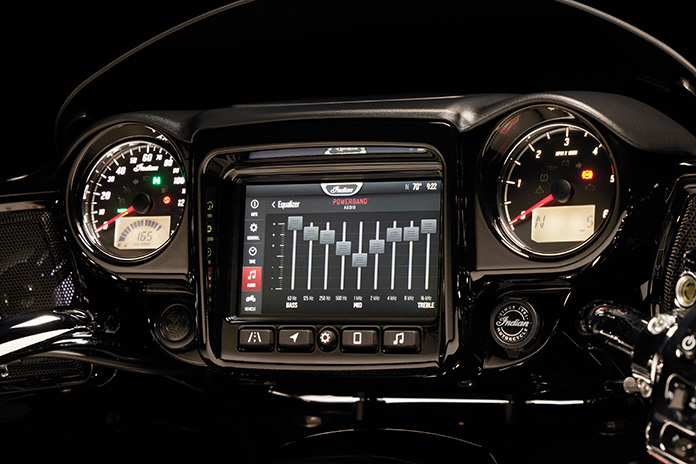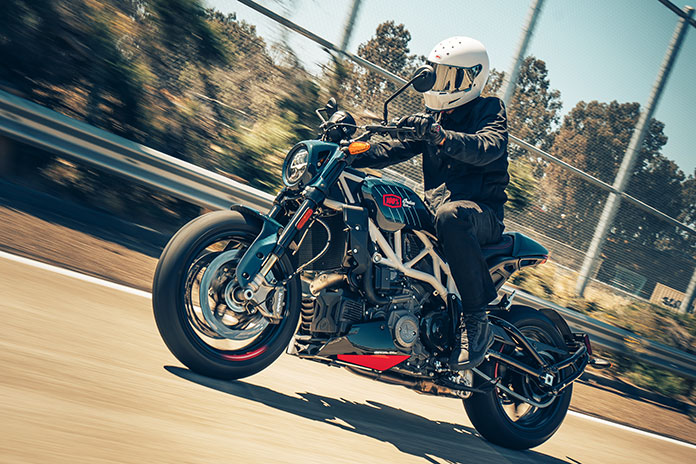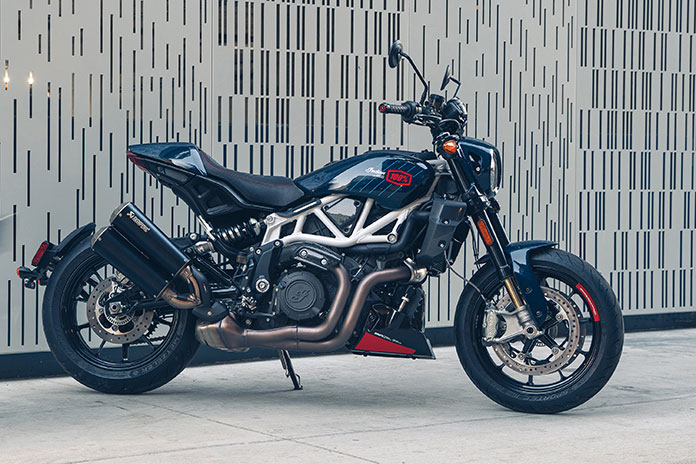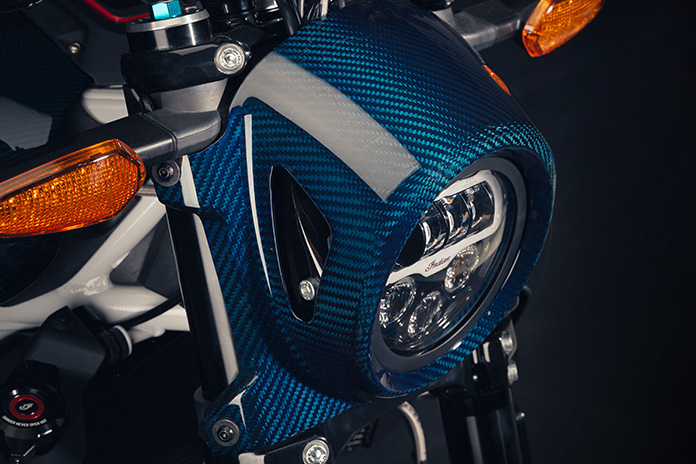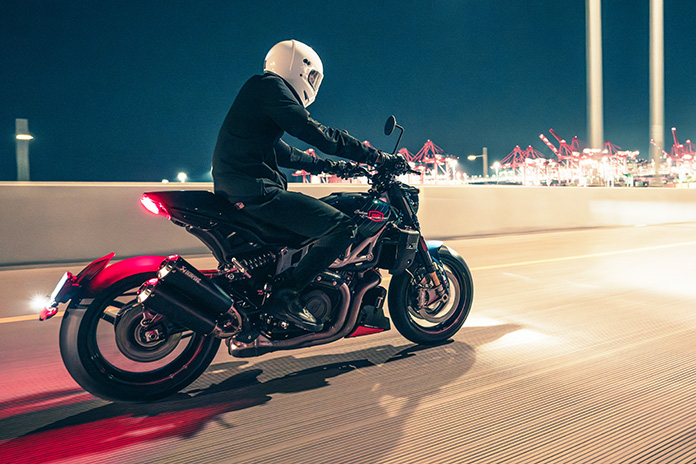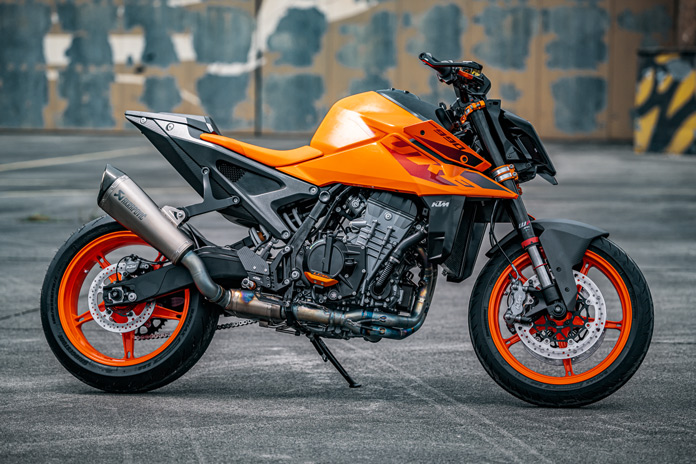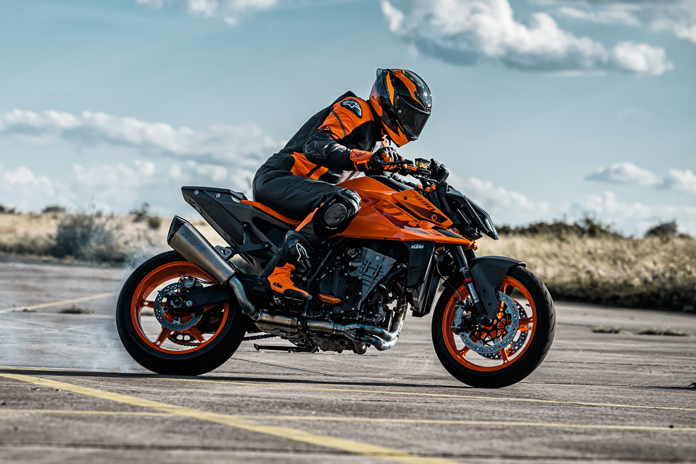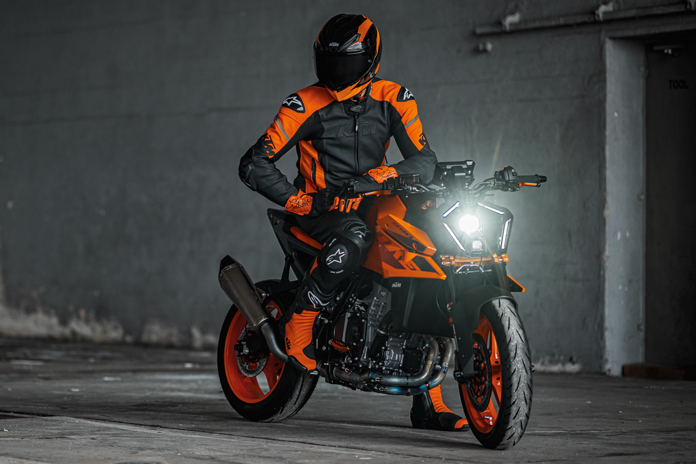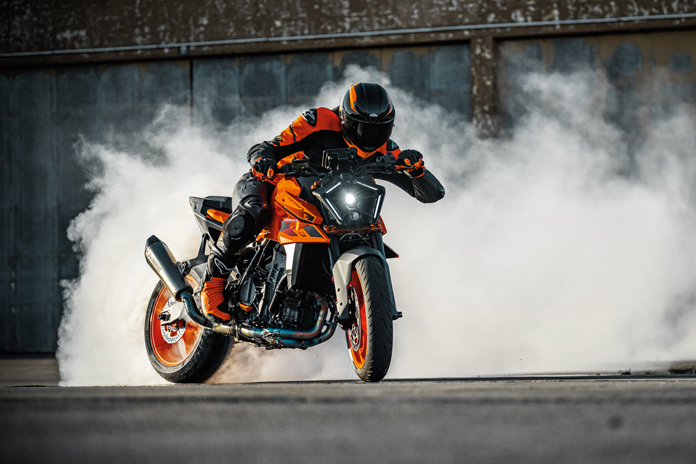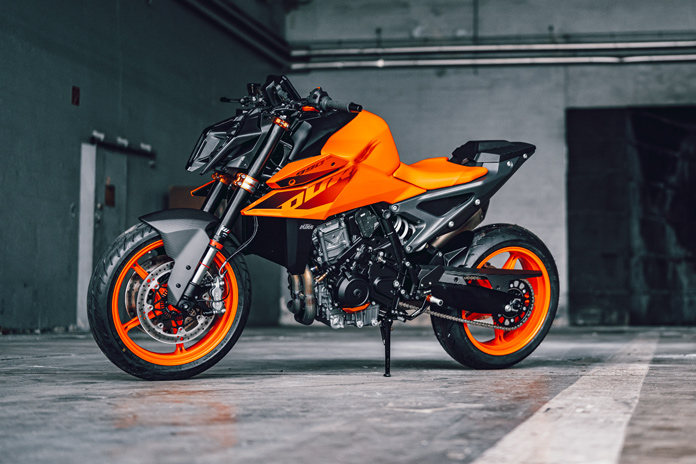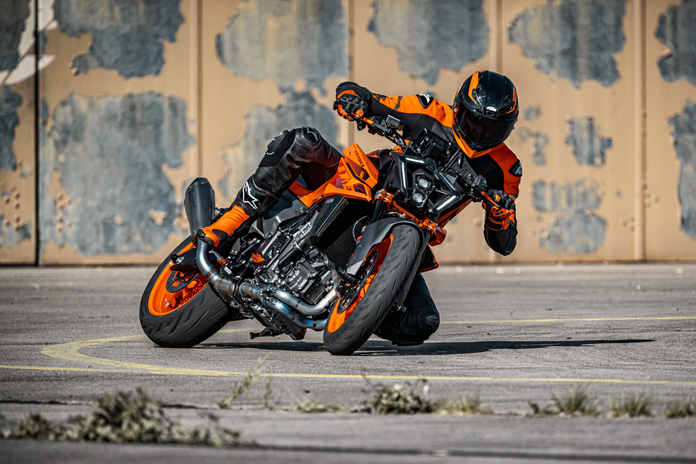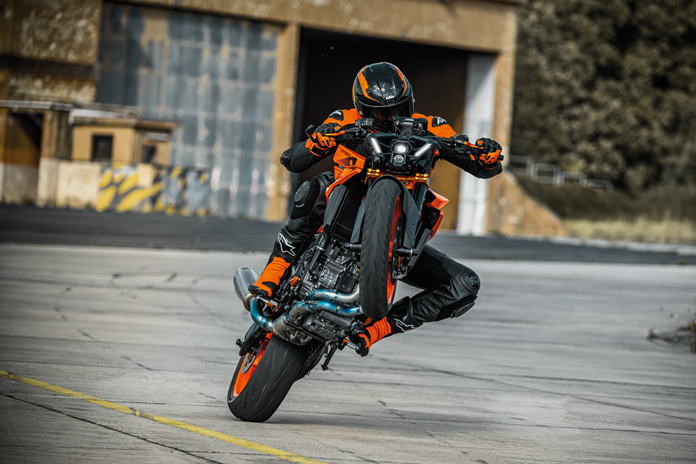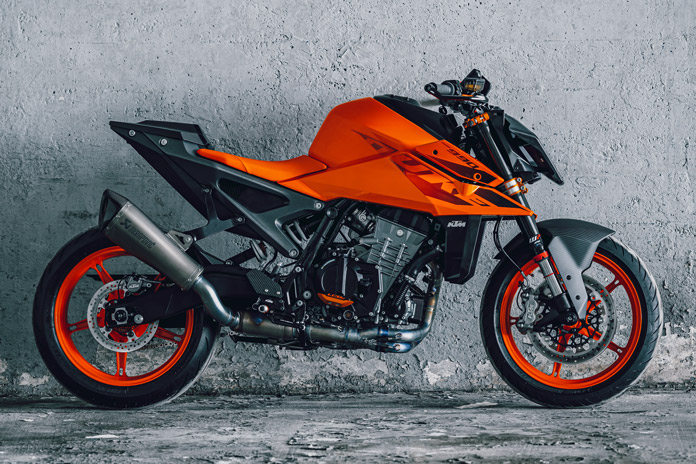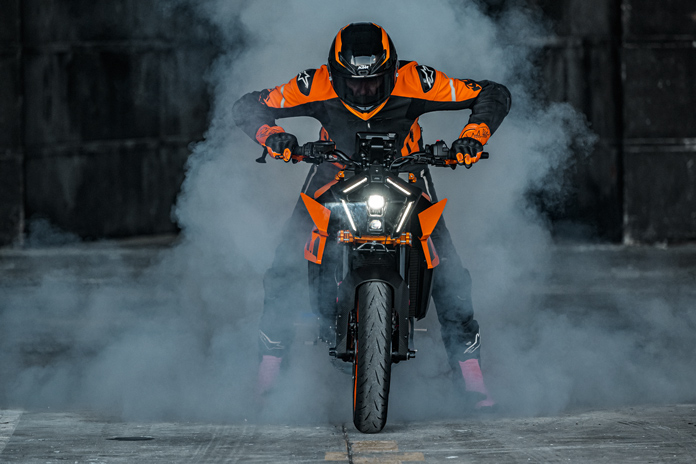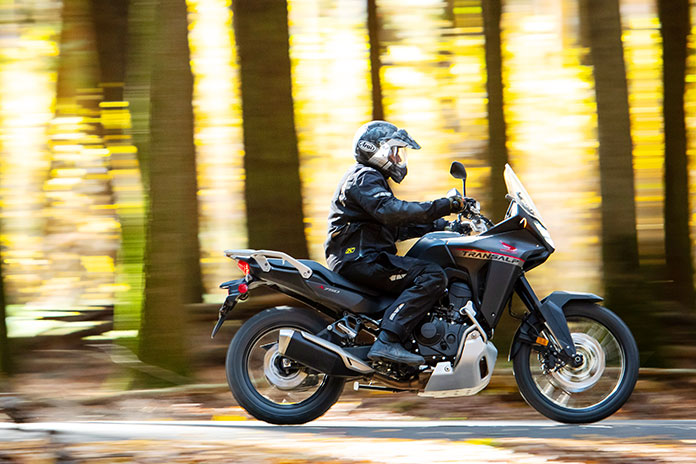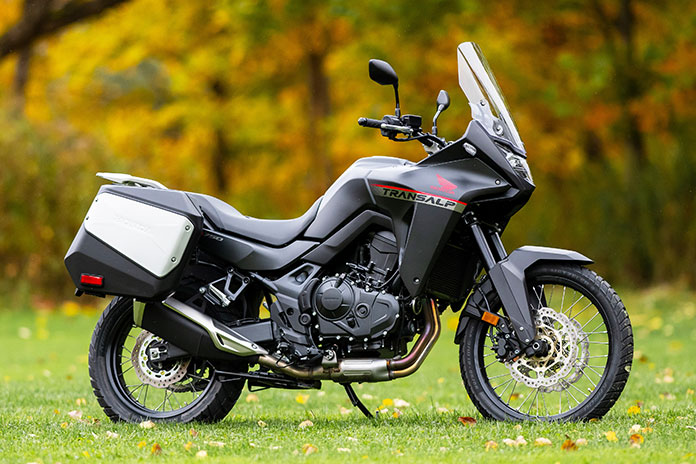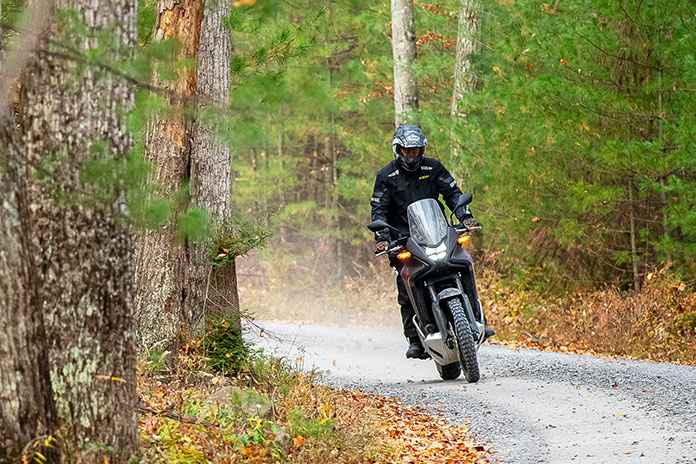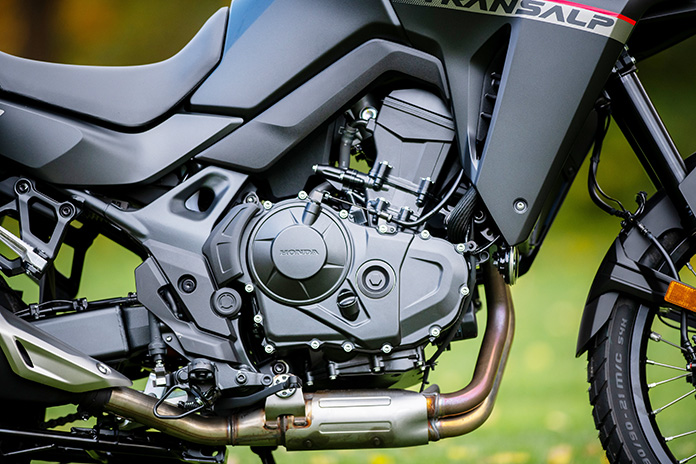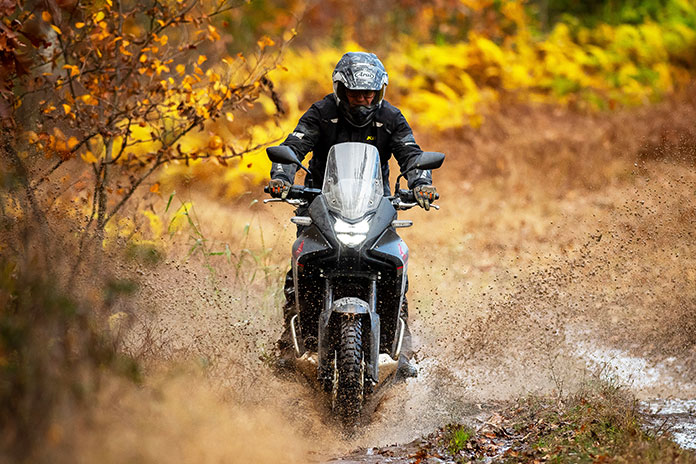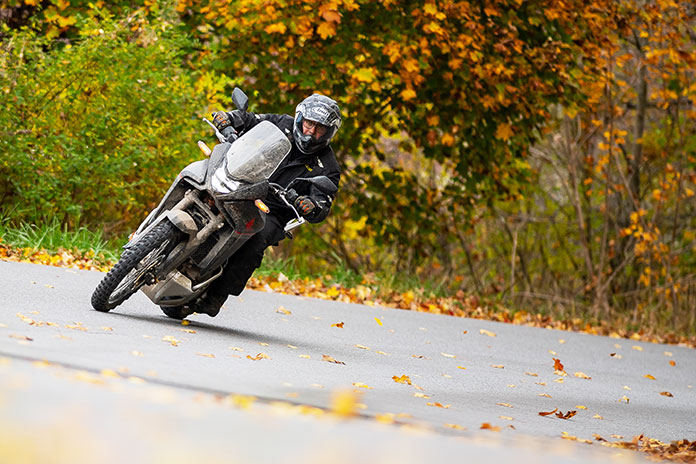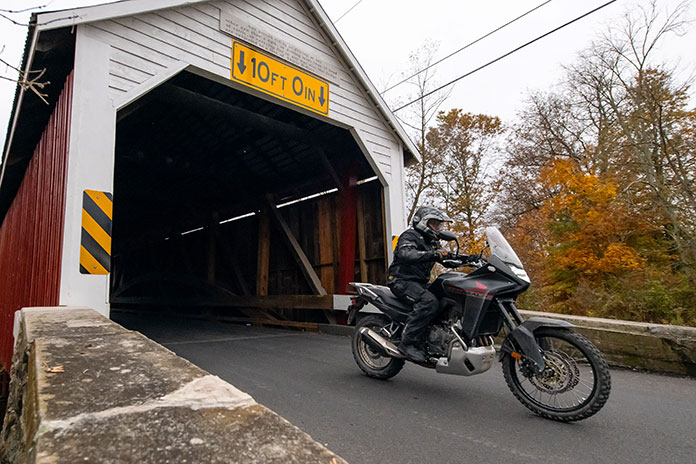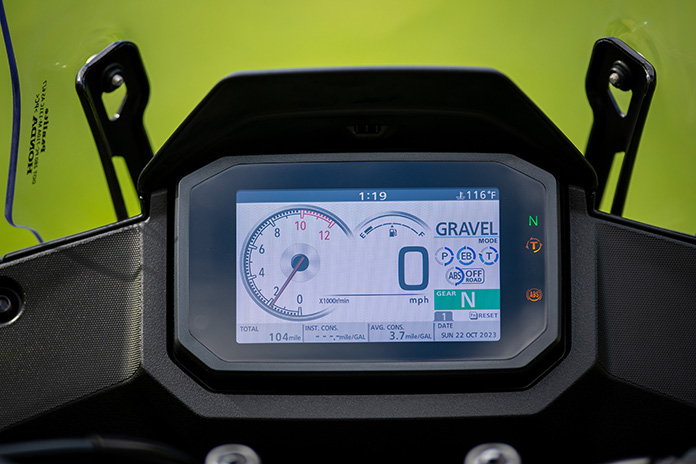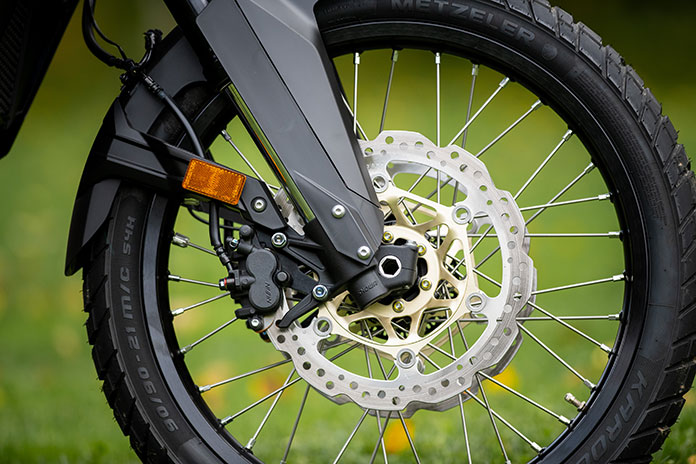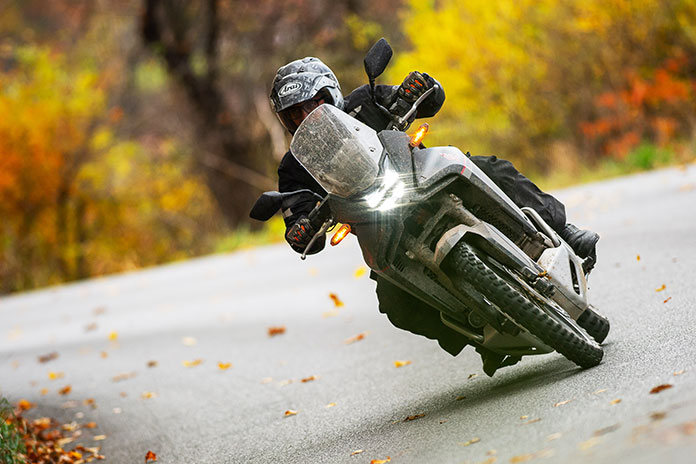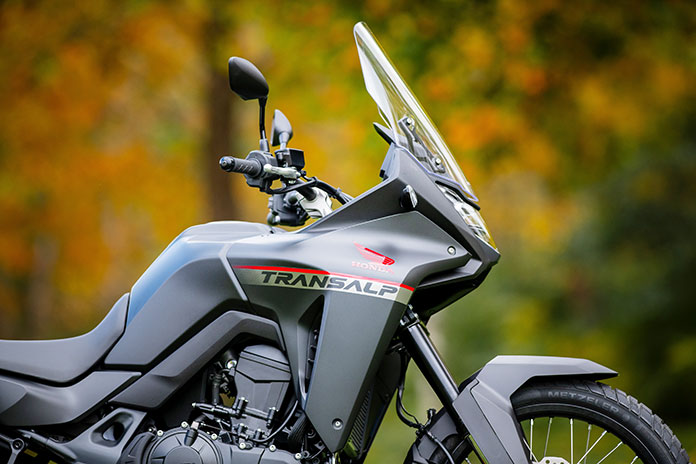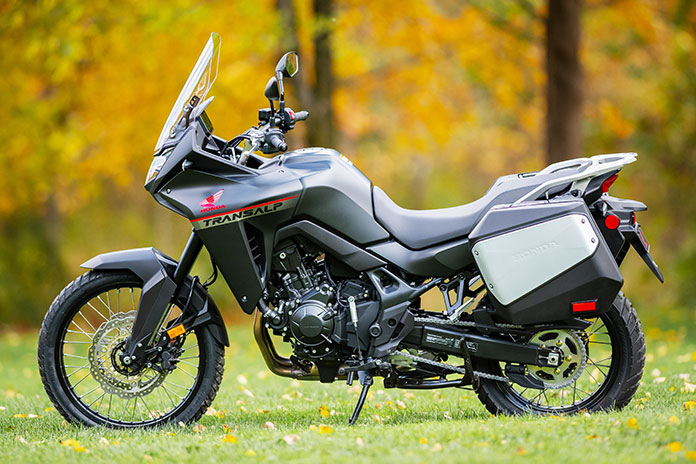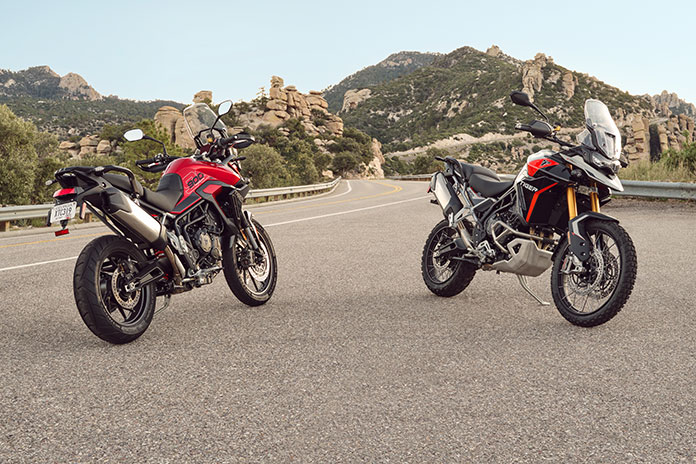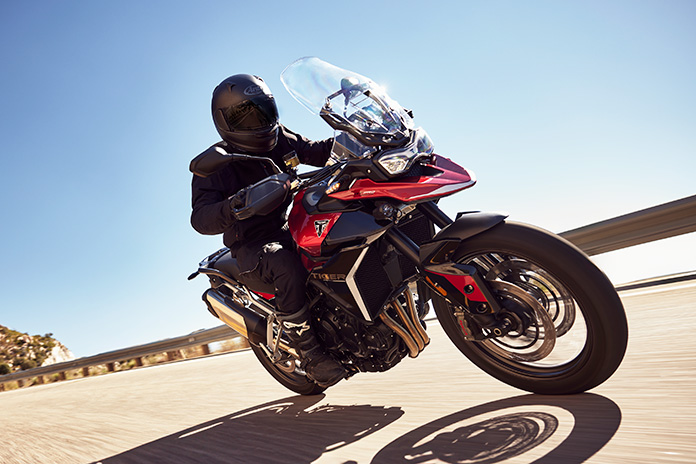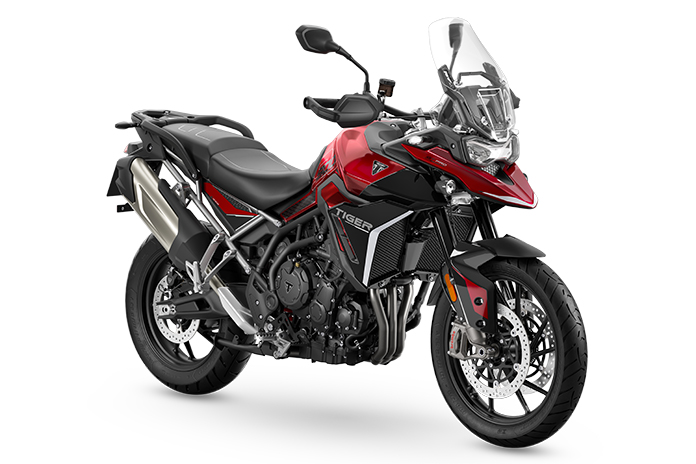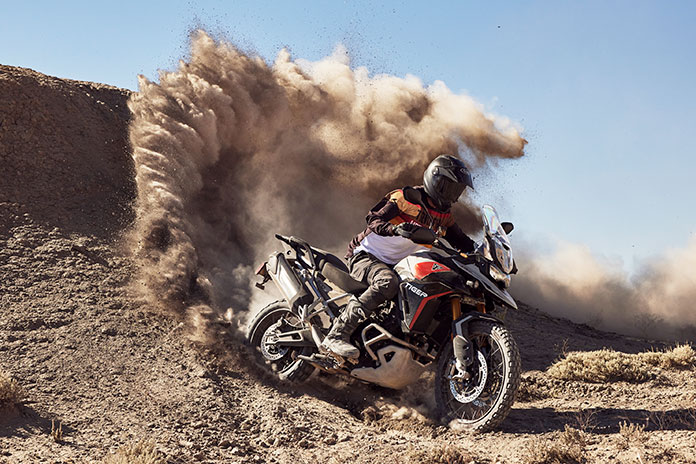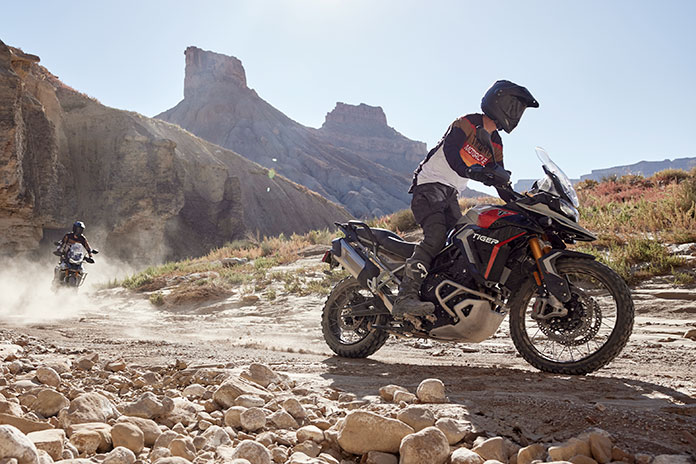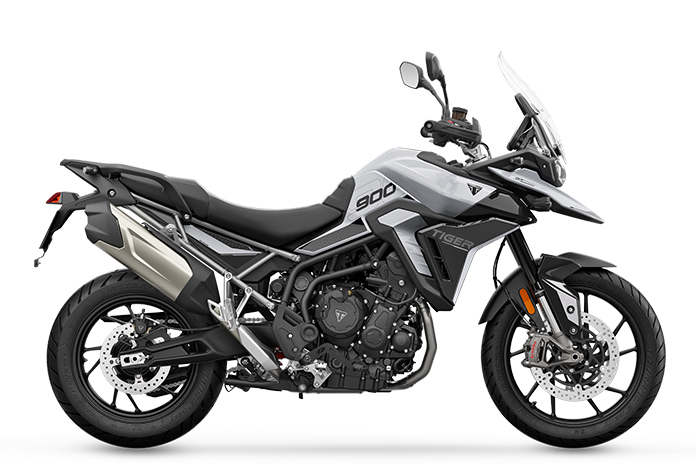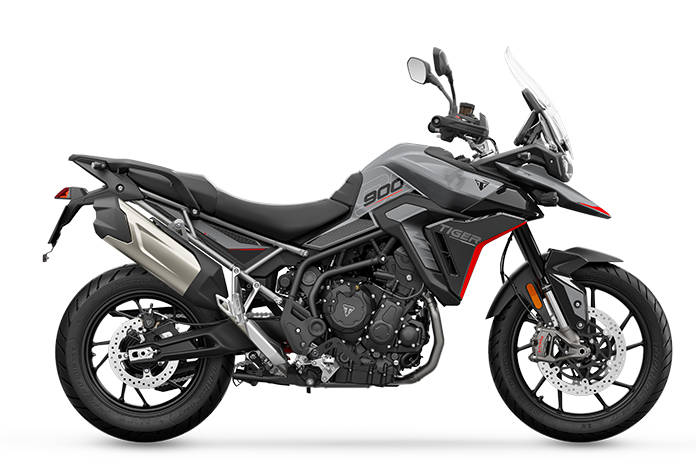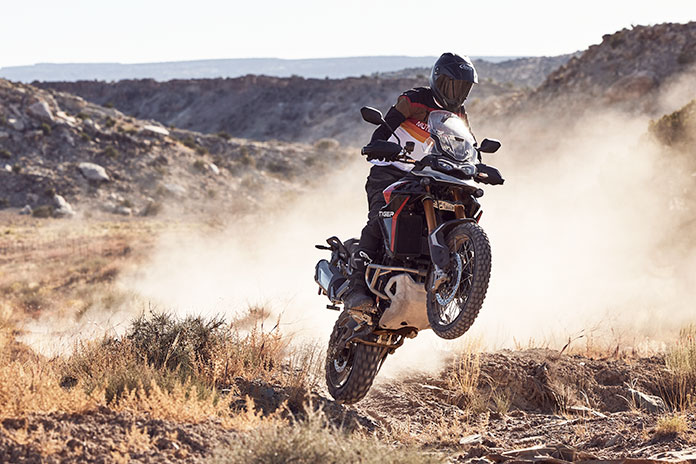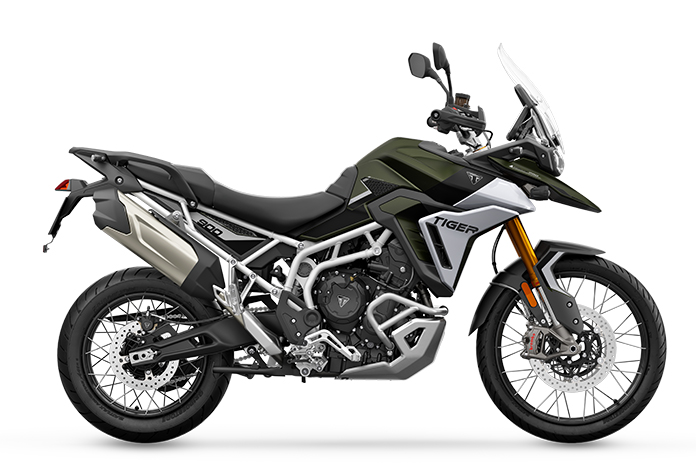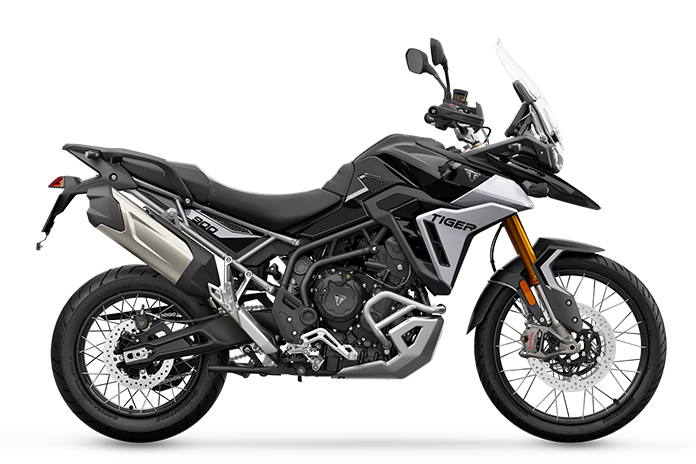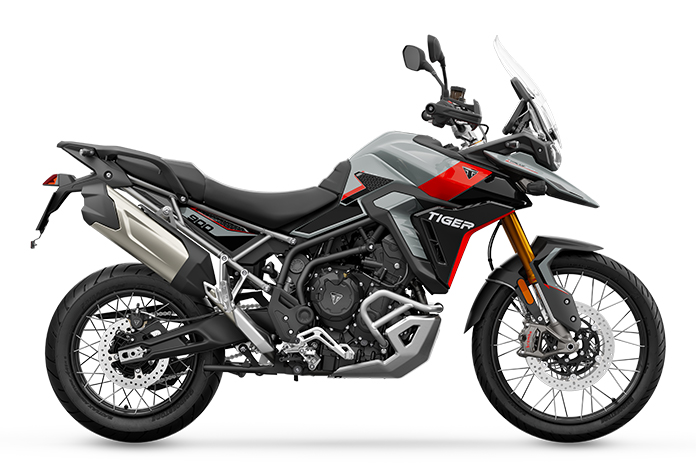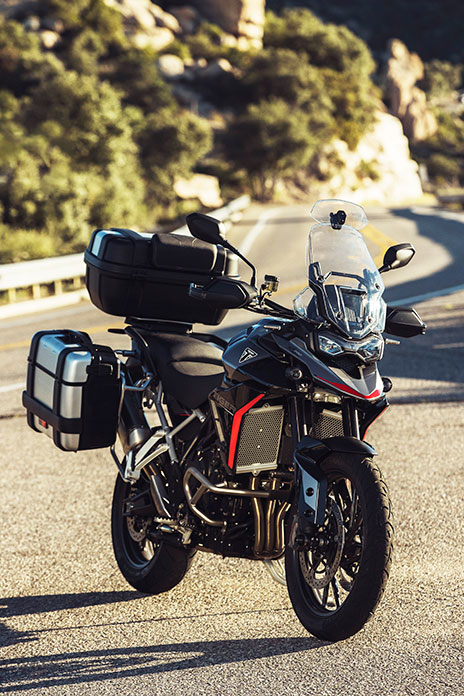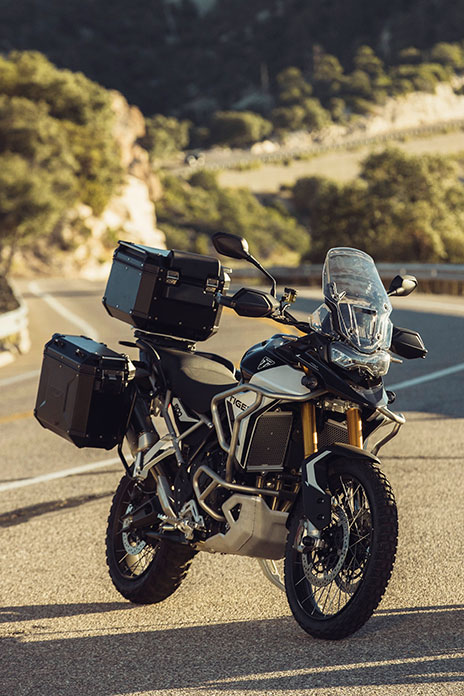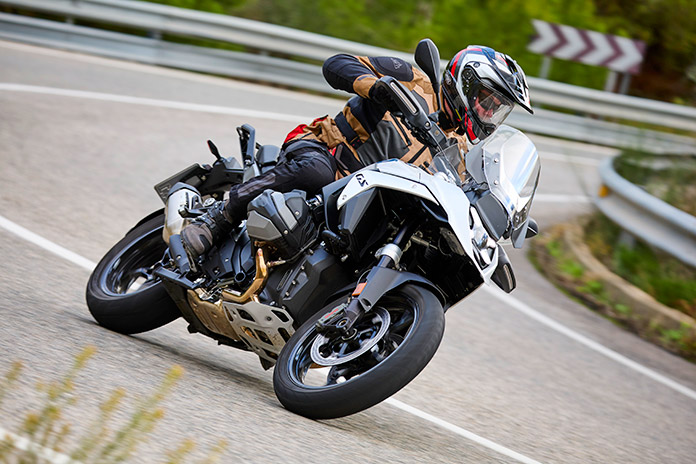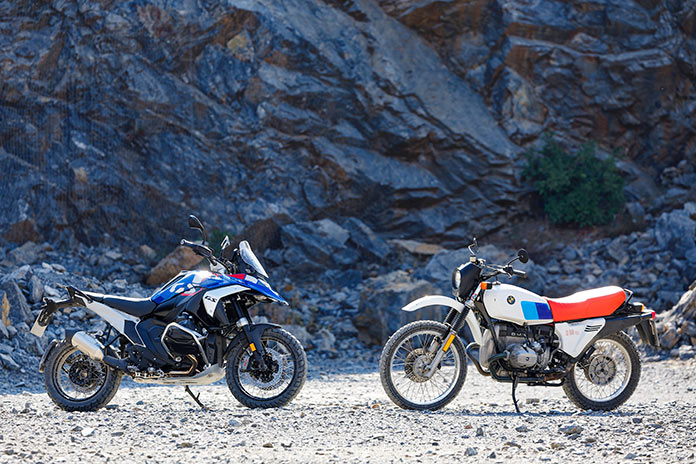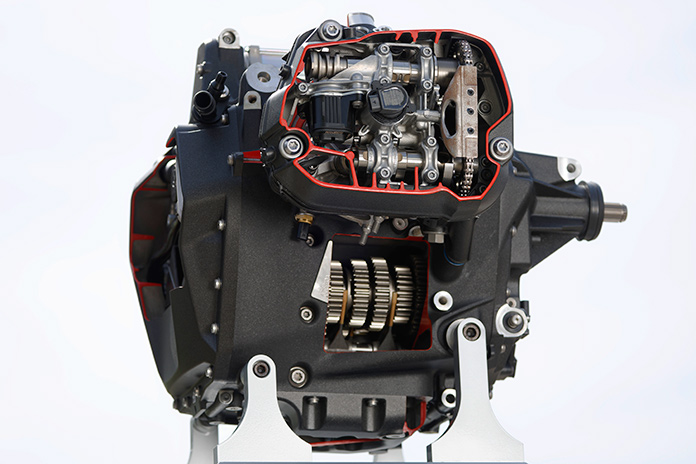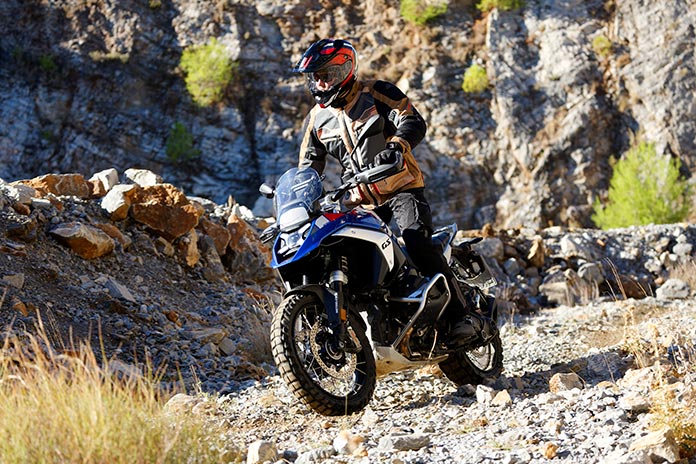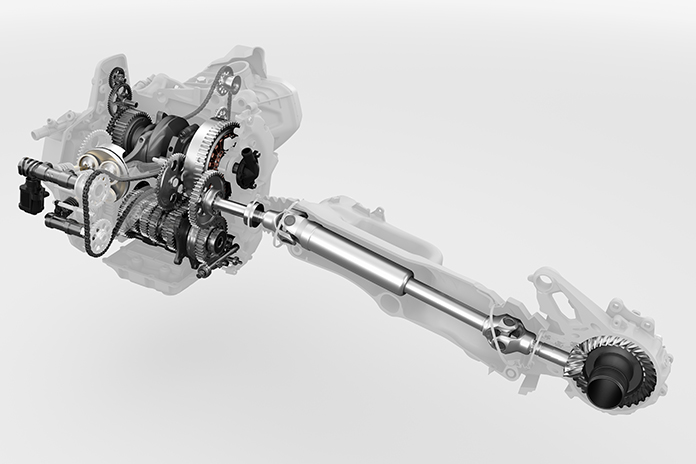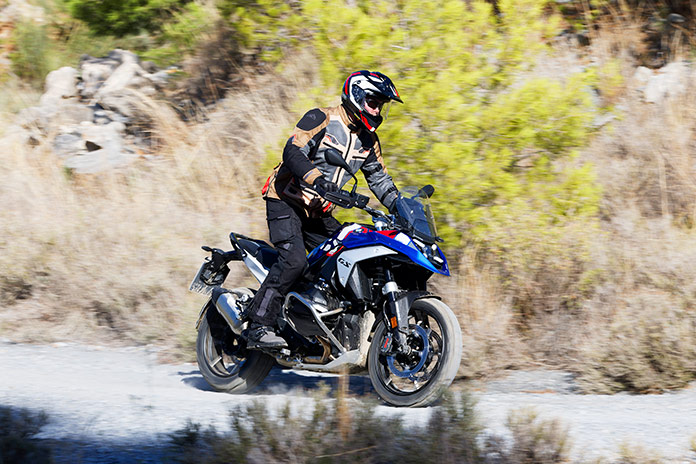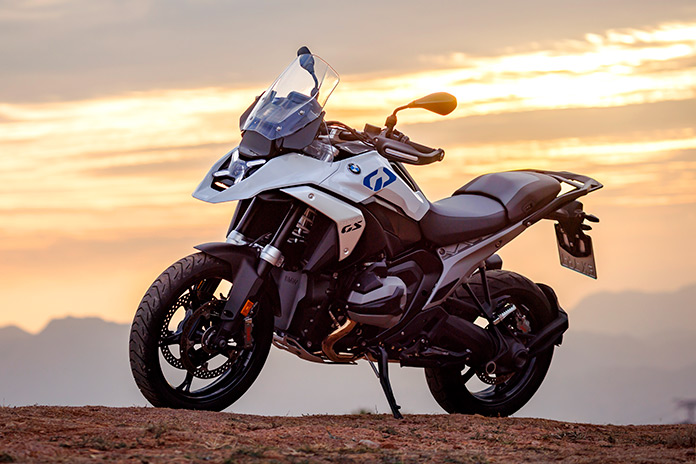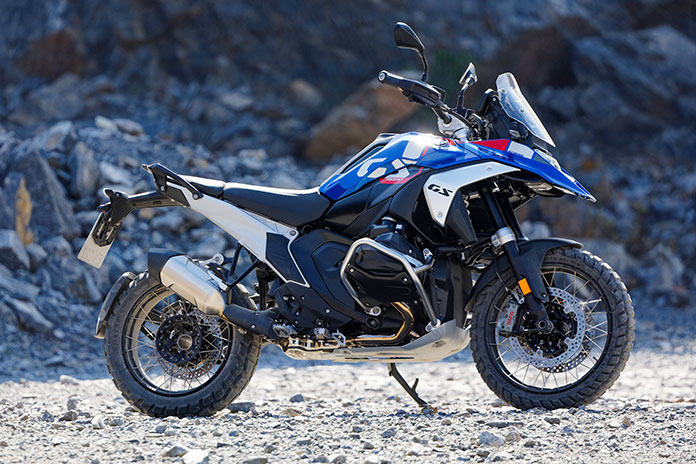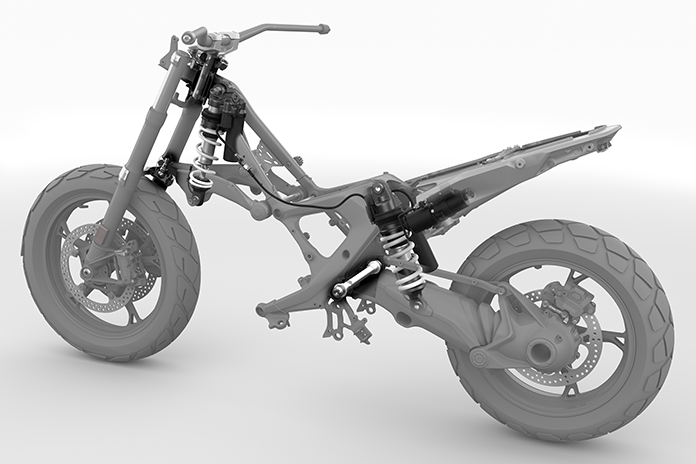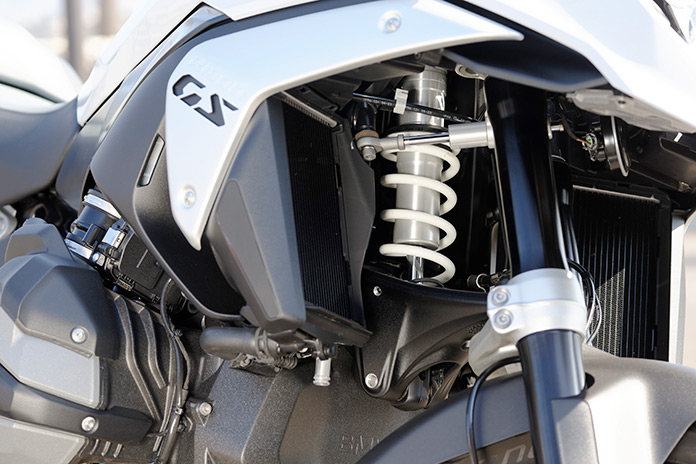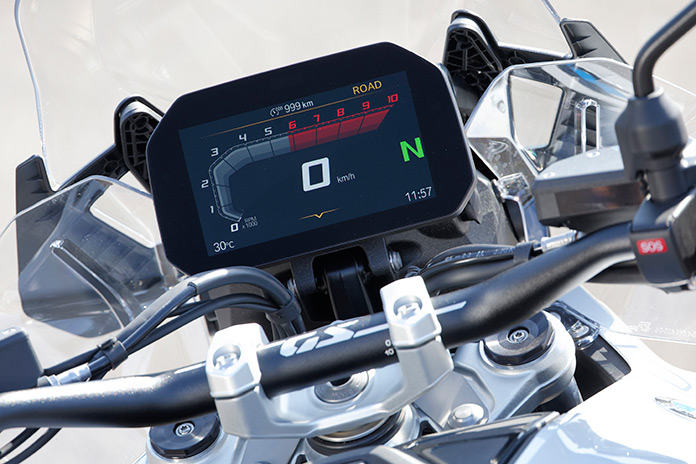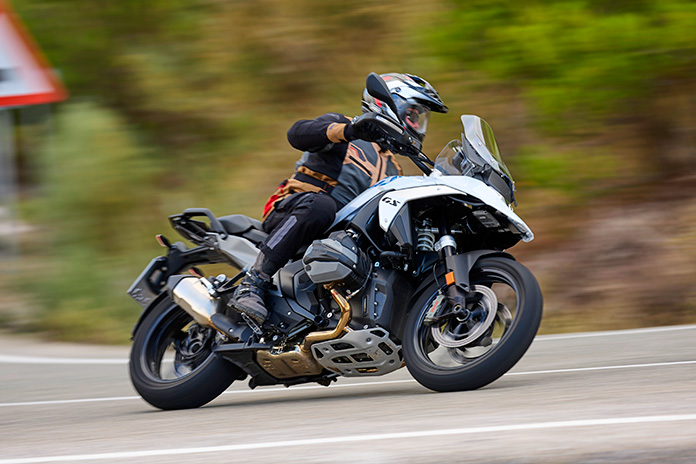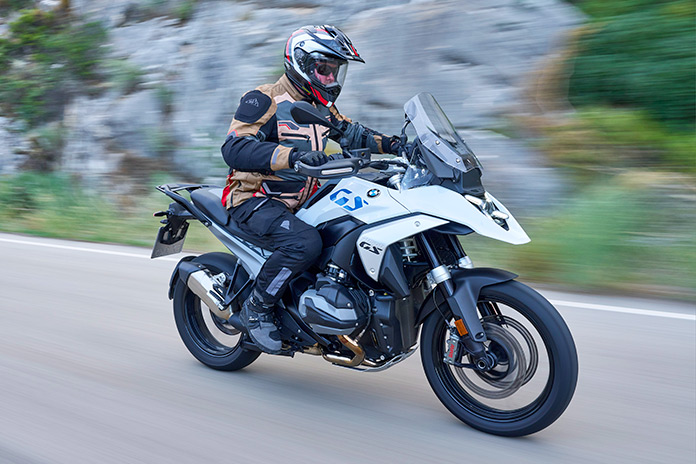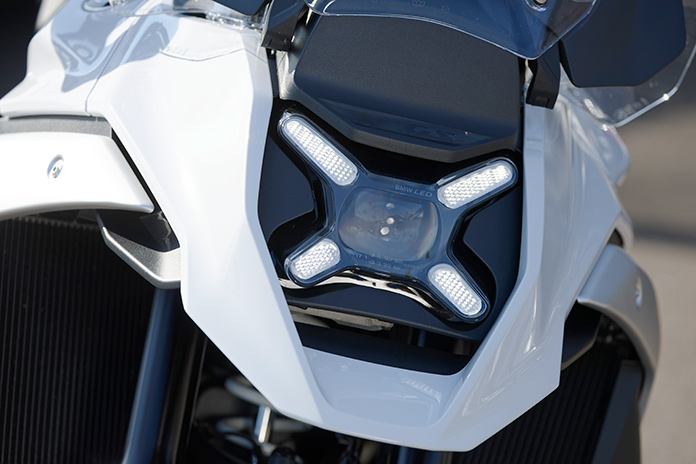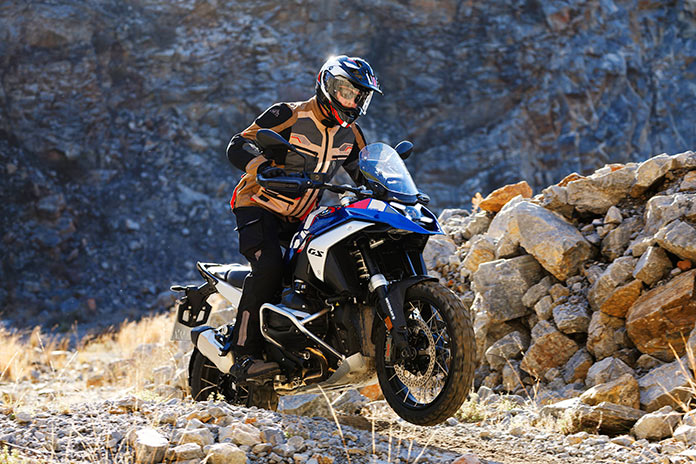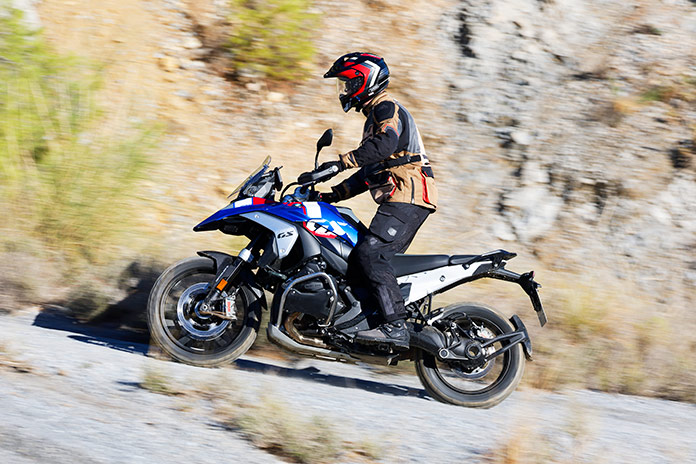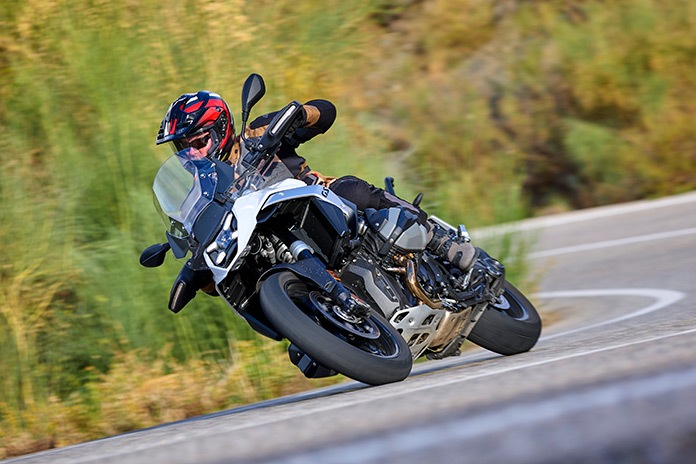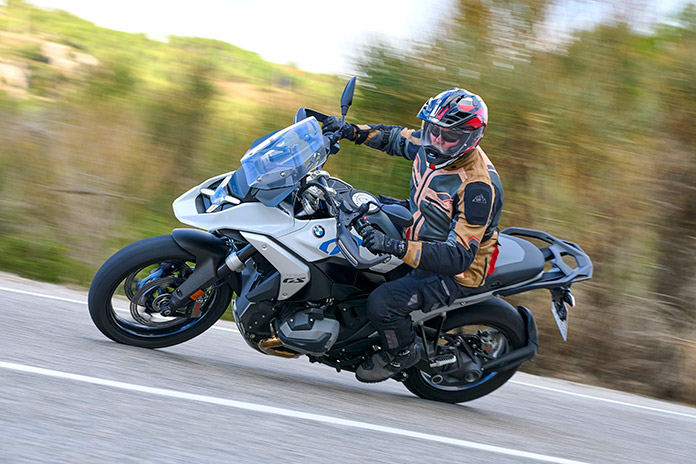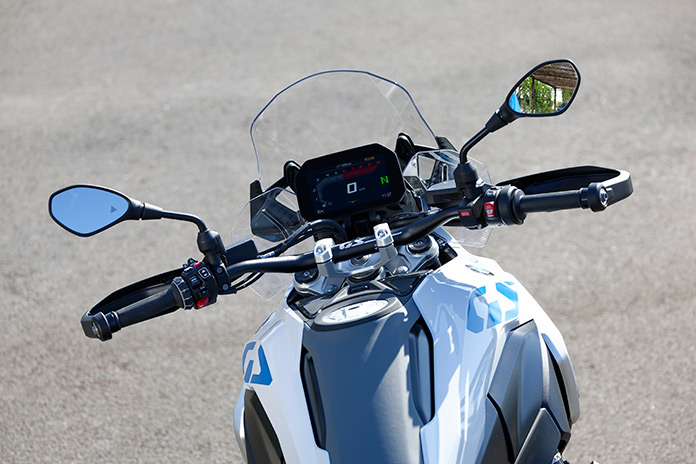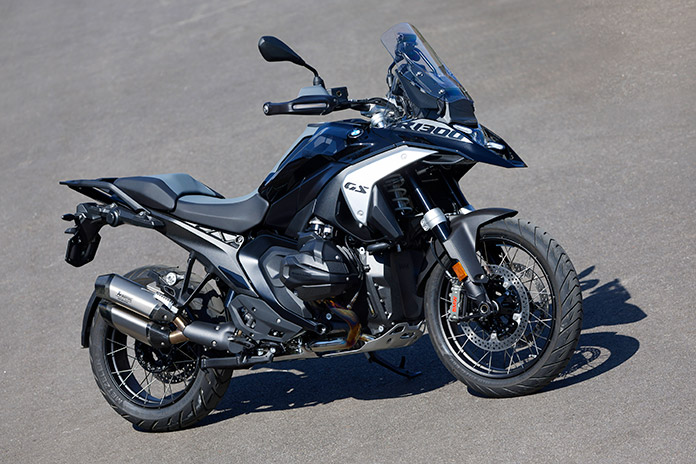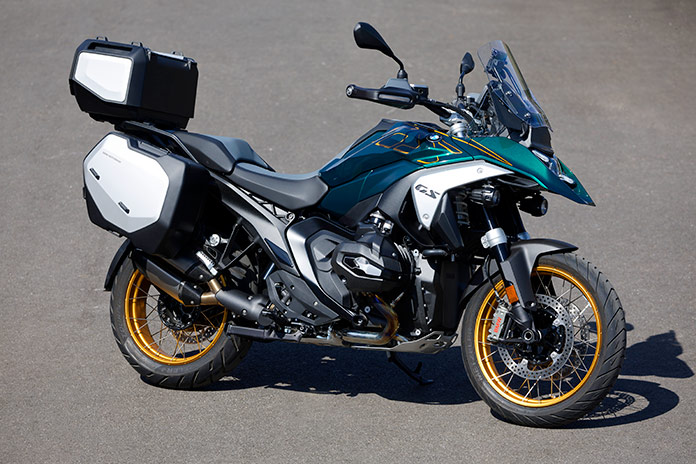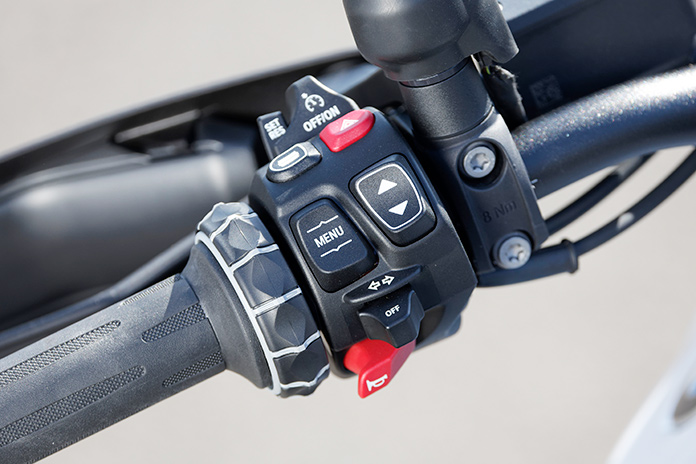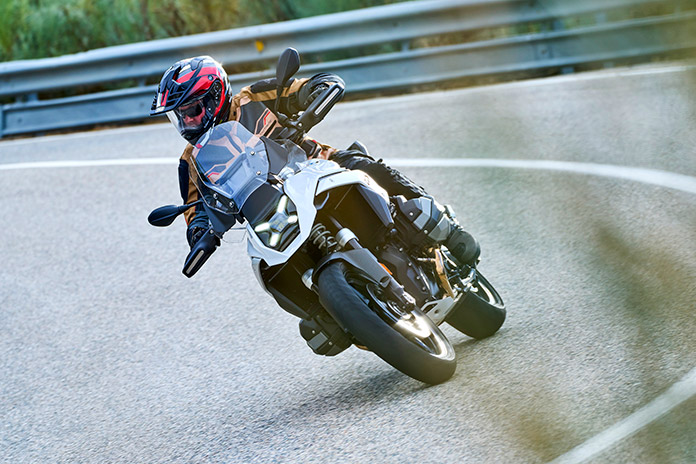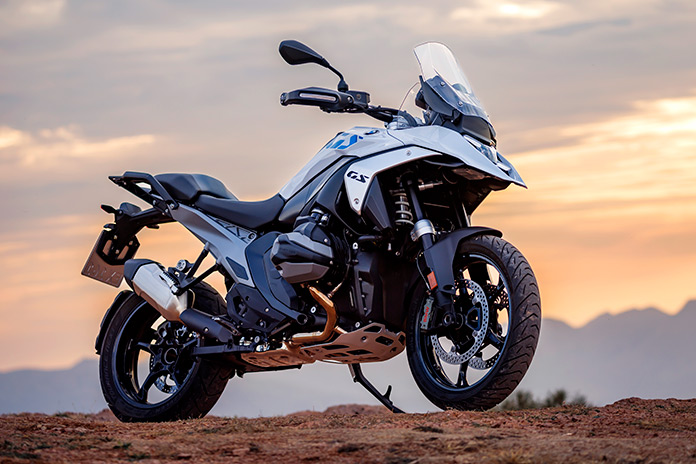Following the discontinuation of the Moto Guzzi Stelvio in 2016, the company has announced that it is launching a new version of the adventure bike for 2024.
Named after the famous Alpine pass on the Italian/Swiss border that connects two valleys through 48 legendary hairpin bends, the 2024 Moto Guzzi Stelvio is powered by the engine recently introduced on the V100 Mandello – a liquid-cooled 1,042cc transverse V-Twin with DOHC and 4 valves per cylinder – but the the Stelvio engine distinguishes itself in several respects.
Related: 2022 Moto Guzzi V100 Mandello | First Look Review
The Moto Guzzi V100 Mandello and Stelvio projects started in parallel before following quite different development paths. The Moto Guzzi engine builders received a clear directive right from the start: to craft an engine suitable for a variety of motorcycle types. For instance, the decision to create an oil sump isolated from the crankcase via a reed valve has resulted in minimal expansion of the lower portion of the engine, which enhances the essential ground clearance required for overcoming off-road challenges.
Moto Guzzi reps said that “in general, a huge effort has been made to decrease inertia as much as possible (up to 50% less than the previous 1200 8V engine), decreasing weight and giving better responsiveness.”
A counter-rotating shaft is integrated to reduce reverse torque and enable a reduction in the weight and dimensions of the crankshaft, thereby enhancing both compactness and overall performance. The outer crankcases were designed to have the structural function of reinforcing the frame, with its eight attachment points. The rider footpegs are securely fastened to the crankcases with just a few rubber pads, taking advantage of the engine’s balance to effectively eliminate vibration.
The longitudinal V-Twin makes a claimed 115 hp at 8,700 rpm 77.4 lb-ft of torque at 6,750 rpm, with 82% available as early as 3,500 rpm and redline at 9,500 rpm. The 2024 Moto Guzzi Stelvio also has a 6-speed gearbox, throttle-by-wire, and a slip/assist clutch. The gearbox has also undergone a redesign, which the company says resulted in even smoother and more seamless gear changes achieved by relocating the cotter from the primary shaft of the gearbox to the clutch, thereby enhancing its damping capacity and overall operation. The cam gear shift was also altered to include optimized swingarm pilot cams, and the performance of the accessory quickshifter has been improved thanks to new electronic operating strategies.
The final cardan driveshaft of the Stelvio has an aluminum single-sided swingarm positioned on the left side. Compared to the one on the V100 Mandello, it has been reinforced to adapt it to off-road use. The minimal output of the driveshaft and the longitudinal extension of the swingarm have reportedly eradicated the initial upward effect upon opening the throttle, eliminating the necessity for reaction rods on the swingarm. One of the distinctive aspects of this system is the inclusion of a solitary universal joint located at the swingarm fulcrum and tilted at a 6-degree angle. This design choice not only maintains a slender central profile for the bike, reducing weight and enhancing ergonomics, but it also features a bevel gear set at an 84-degree angle (in contrast to the 90-degree angle found on other Moto Guzzi models). This arrangement allows the swingarm to accommodate a 170/60 tire fitted on a 4.5-inch tubeless spoked rim (19-inch front/17-inch rear), emphasizing the adventurous spirit of the Moto Guzzi Stelvio.
The suspension system has been exclusively tailored for the Stelvio, with a 46mm Sachs fork and a KYB shock, both adjustable for rebound and preload and offering 6.7 inches of travel front and back. The Brembo braking system incorporates dual 4-piston calipers clamping down on 320mm floating discs at the front and a 2-piston caliper and 280mm disc in the back.
See all of Rider’s Moto Guzzi coverage here.
Aerodynamics have undergone an extensive overhaul with the aim of optimizing air protection and comfort. The windscreen, which is electrically adjustable up to 2.75 inches, is shaped to deflect airflow while avoiding rear air vortices, aided by the presence of the two side deflectors. Moto Guzzi Stelvio also evokes iconic models from its heritage, drawing inspiration from elements such as the louvers present in the underseat sides. Additionally, the radiator’s placement and the concealment of rubber connection hoses from view, alongside the refinement of the electrical system, where the wiring remains completely hidden, all contribute to a clean look.
Moto Guzzi also focused on optimizing weight distribution and lowering the mass via the engine architecture and the 5.5-gallon fuel tank that extends beneath the seat, as well as the layout of the new tubular-steel frame, which uses the engine as a load-bearing element. The frame boasts four front anchor points instead of the two on V100 Mandello, giving a claimed 20% increase in rigidity.
The chassis has a 60-inch wheelbase and a 25.6-degree rake. The 32.7-inch seat height has an active riding position that keeps the back upright and the legs slightly bent, while a wide, adjustable-section aluminum handlebar contributes to off-road control while also providing a more relaxed touring posture.
When it comes to touring, the Stelvio is the first Moto Guzzi equipped with the PFF Rider Assistance Solution offered as a factory option and built on 4D Imaging Radar technology. The system employs two radar sensors – one above the front headlight assembly and one below the rear headlight assembly – with a wide field of vision and reliable monitoring regardless of lighting and environmental conditions.
The system includes Following Cruise Control (FCC), which utilizes the front radar to adapt the speed based on the vehicle in front; Forward Collision Warning (FCW) to identify potential collisions with vehicles and objects situated in front of the motorcycle; Blind Spot Information System (BLIS), which notifies the rider of vehicles located in the blind spots detected by the rearview mirrors; and Lane Change Assist (LCA), which continuously scans the area up to 98 feet behind and identifies vehicles approaching from the side that could pose a lane-changing hazard.
The system is part of an electronics package that includes the Marelli 11MP control unit and the 6-axis IMU, which analyzes inputs and optimizes the bike’s cornering ABS. There are five ride modes (Tourism, Rain, Street, Sport, and Off-Road) with various presets for three different engine maps, four levels of traction control, three levels of engine braking, and two levels of ABS control. These settings can also be personalized, allowing riders to fine-tune the parameters to match their individual preferences.
Standard equipment includes a full LED lighting system with Daytime Running Lights (DRLs), cornering lights, and a USB port located beside the 5-inch color TFT panel, which offers a range of information, such as fuel level, air and coolant temperature, gear engaged indicator, remaining range, and instantaneous consumption.
Additional accessories include Moto Guzzi MIA, the multimedia platform enabling smartphone connectivity with the instrumentation through Bluetooth. Moto Guzzi MIA combines an infotainment system for managing voice assistant, phone calls, and music using intuitive handlebar controls, as well as a navigation feature.
Other accessories for the Stelvio include luggage, heated seats and grips, crash guards, a centerstand, TPMS, and anti-theft system, and more.
The 2024 Moto Guzzi Stelvio comes in two color variants, both matte: Giallo Savana, which features a dark yellow hue on the front of the tank and on the side panels, or Nero Vulcano, dominated by the black/gray combination with some yellow highlights on the tank and side panels. The Stelvio without the PFF Rider Assistance Solution will be priced starting at $16,390 and available in December 2023. Pricing on the Stelvio with the PFF system has not yet been announced but is expected to arrive in the second quarter of 2024.
For more information, visit the Moto Guzzi website.
Check out more new/updated bikes in Rider’s 2024 Motorcycle Buyers Guide
The post 2024 Moto Guzzi Stelvio Review | First Look appeared first on Rider Magazine.
Source: RiderMagazine.com

